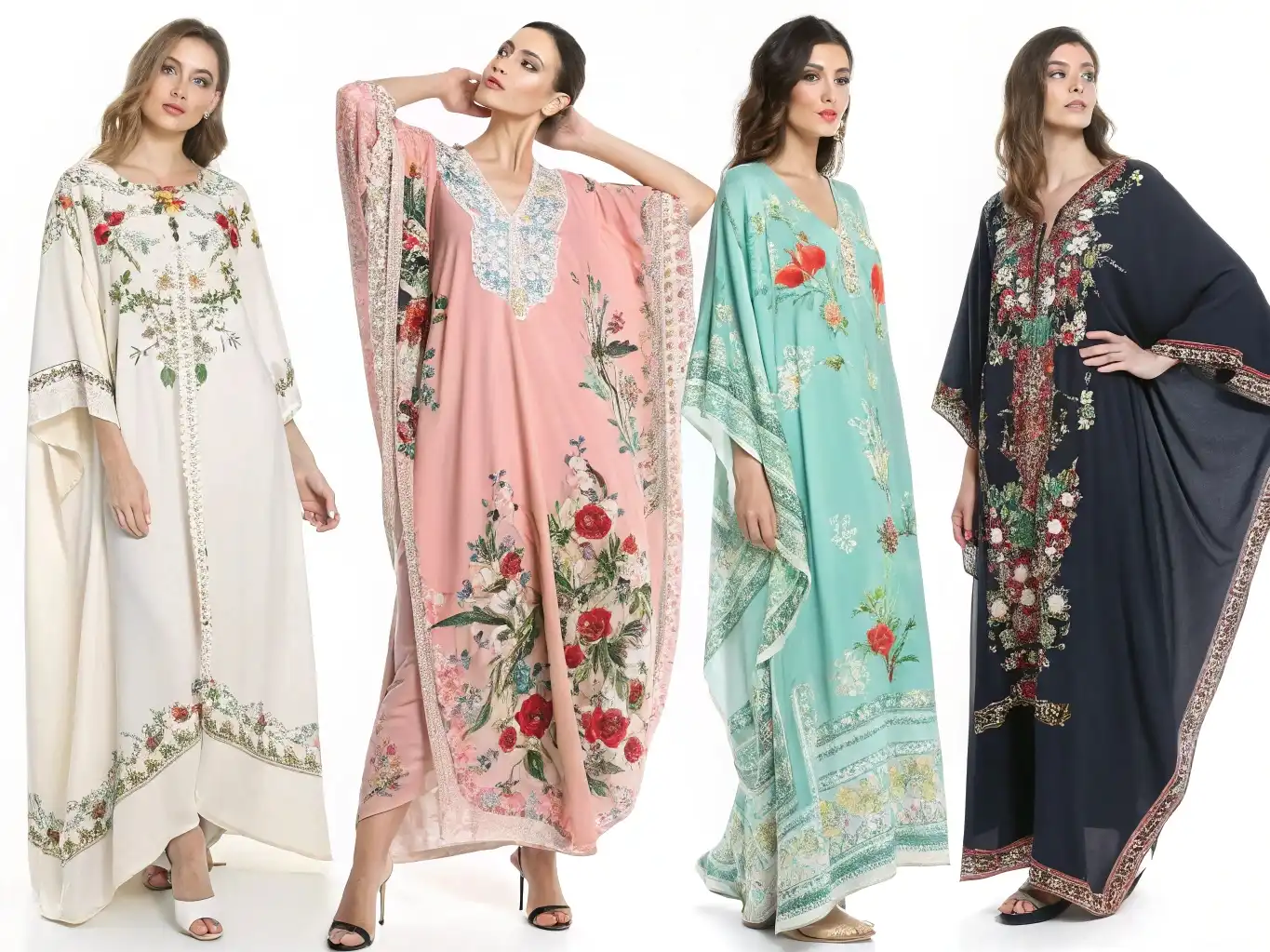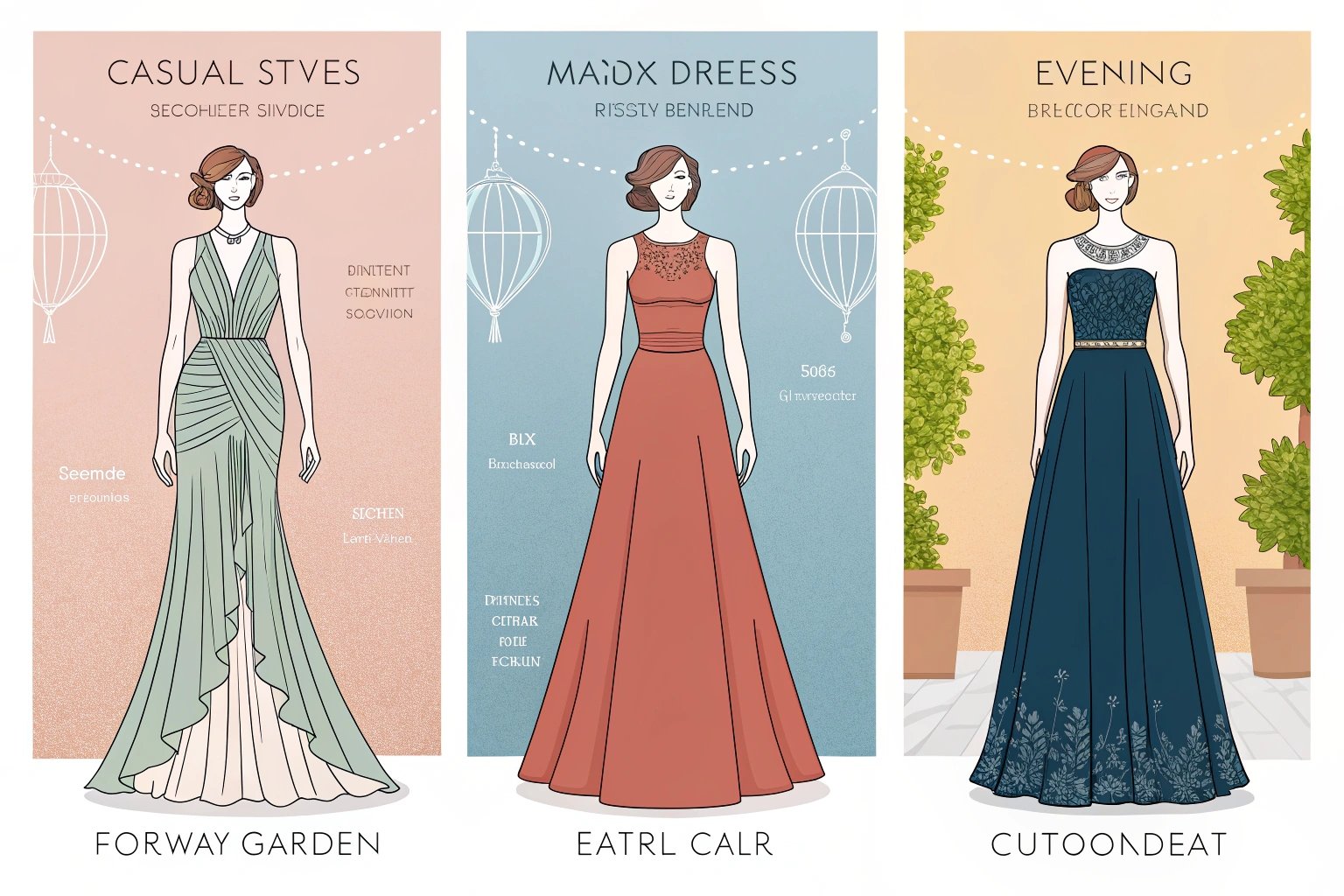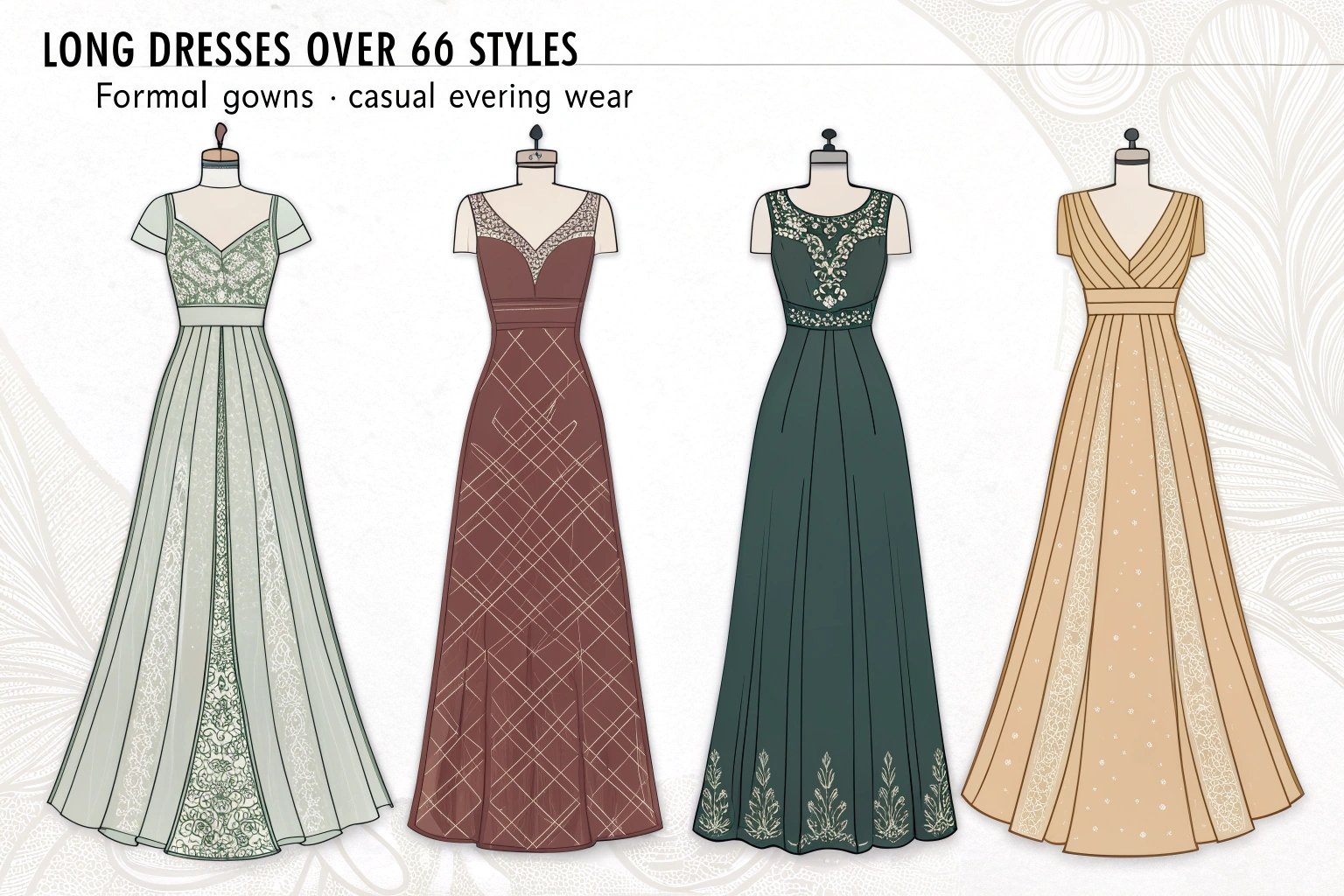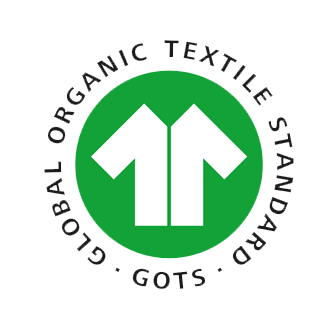In the first three installments of our Types of Tops series, we’ve taken a step-by-step journey through the diverse world of women’s tops. Part 1 introduced the most essential and versatile styles, highlighting their timeless appeal and wardrobe value. Part 2 expanded the scope with over 40 trending designs, breaking down key features and styling tips for today’s fashion landscape. Part 3 delved deeper into unique details and distinctive silhouettes, giving readers a more layered understanding of how tops can define both everyday looks and statement outfits.
Now, in Part 4, we continue this exploration with a focus on tops that blend functionality with fashion. From activewear-inspired designs and casual staples to innovative fabrics and forward-thinking details, this chapter uncovers the latest must-have styles shaping the market. Together, these insights will complete a more comprehensive panorama of women’s tops—helping you stay ahead of trends and make smarter style or buying decisions.
Drawstring Hoodie
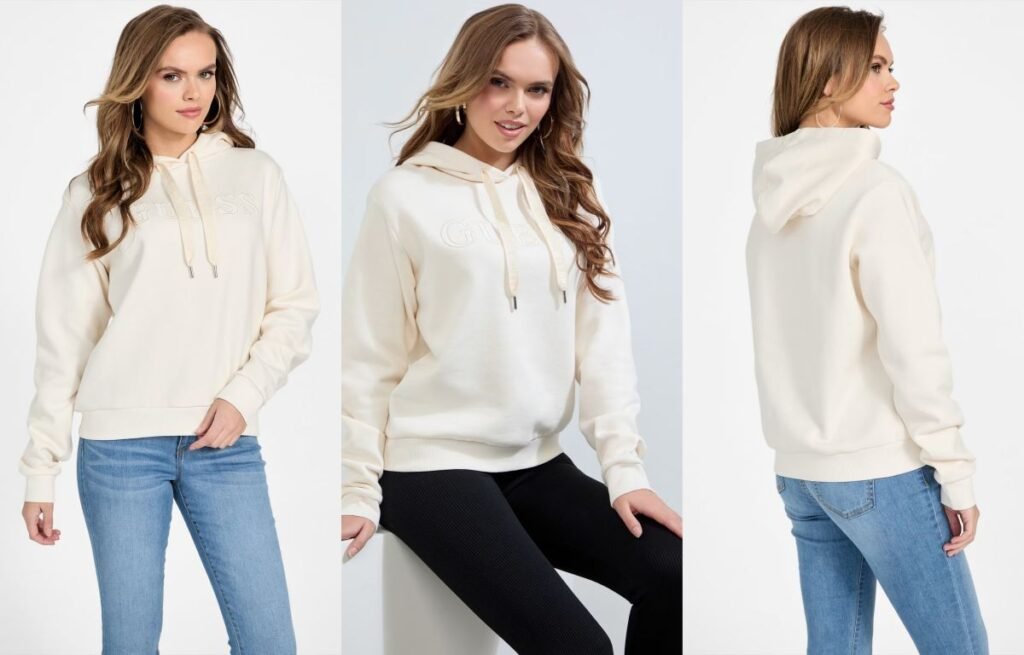
How Does a Drawstring Hoodie Actually Work, and When Should I Choose It?
The drawstring hoodie uses a woven hood channel with cords. When I pull the ends, the opening contracts, trapping warm air. When I loosen the cords, air circulates, dissipating heat. This quick-adjustability makes the hoodie perfect for commuting, working out, traveling, and changing weather.
If you want controlled warmth, a softer silhouette than a jacket, and a secure hood, opt for a drawstring hoodie. The drawstring allows for easy, on-the-go adjustments. Layering it under a shell provides temporary protection from the elements and creates a casual, street-style look without the bulk.
Mechanisms, use cases, and adaptation logic
How the system works
- Channel + cord: Cord slides inside a stitched tunnel along the hood edge.
- Friction or stopper: Tension holds position; optional cord lock adds stability.
- Seal: Tightening reduces heat loss at the face opening.
When I pick it
- Commuting: Tight hood on platforms; loosen on trains.
- Training: Open during warm-up; cinch for outdoor cooldowns.
- Travel: Soft pillow, fast temp control on flights.
| Scenario | Cord Setting | Fabric Weight | Why it works |
|---|---|---|---|
| Windy walk | Medium-tight | 320–360 GSM brushed fleece | Warmth with stable hood |
| Indoor lounge | Loose | 260–300 GSM terry | Breathable comfort |
| Light drizzle | Tight + jacket | 300–340 GSM fleece | Seal under shell |
What Design Choices Change Fit, Warmth, and Style?
Small decisions change the feel a lot. Hood panels decide how the fabric sits on my head. Cord type decides grip and look. Rib structure at cuffs and hem decides heat retention. Pocket shape changes function and bulk. I tune these based on use and brand story.
A three-panel hood, flat knit cord, and 2×2 rib hold shape and warmth best. A two-panel hood and round cord feel softer and more relaxed. Wider rib hems trap heat; open hems drape. Pocket bar-tacks add strength. Each choice pushes the hoodie toward sport, street, or lounge.
Pattern, Cord, and Trim—What Really Matters
Hood architecture
- 3-panel hood: Contoured crown, clean face line, less slippage.
- 2-panel hood: Simpler, softer drape, lower cost.
- Neck height: Higher front rise blocks wind; lower front feels casual.
Drawcord systems (feel, function, cost)
| Cord Type | Handfeel | Hold/Slip | Visual | Notes |
|---|---|---|---|---|
| Flat cotton knit | Soft, matte | High hold | Classic | Great for heritage looks |
| Round braided poly | Smooth | Medium | Sporty | Colorfast, durable |
| Tubular cotton/poly | Spongy | Medium-high | Premium | Takes dipped tips well |
| Elastic bungee + lock | Technical | Very high | Outdoor | Add cord-lock reinforcement |
Tips/Aglets: molded, metal, or heat-shrink; metal looks premium but needs corrosion checks.
Ribs and edges
- Cuffs/hem: 2×2 rib retains shape; 1×1 is lighter.
- Hood binding: Clean finish; prevents tunnel stretch.
Pockets
- Kangaroo: Warmth and storage; reinforce corners with bar-tacks.
- Side-entry welt: Cleaner profile under coats.
- No pocket: Slim silhouette for minimalists.
How Do Materials, GSM, and Lining Affect Comfort and Longevity?
Fabric decides warmth, drape, and pilling. I pick weight by climate and end use. Brushed back fleece traps heat and feels plush. French terry breathes better and works indoors. Blends boost durability. Recycled yarns reduce impact while keeping performance.
For everyday wear, 300–340 GSM fleece balances warmth and weight. For studios or spring, 260–300 GSM terry breathes. Cotton-rich blends feel natural; poly-rich blends resist shrink and dry faster. Add 3–5% elastane in ribs only, not in body, to keep structure and stretch where needed.
Fabric Matrix, Lining, and Shrink Control
Fabric matrix
| Knit | Typical GSM | Warmth | Breathability | Use |
|---|---|---|---|---|
| Brushed back fleece (CVC 60/40) | 300–360 | High | Medium | Street, travel, fall/winter |
| French terry (100% cotton) | 260–320 | Medium | High | Studios, spring/summer layers |
| Recycled poly fleece (RPET) | 280–340 | Medium-high | Medium | Sustainable core programs |
| Heavy cotton fleece (430+) | Very high | Low | Heritage, cold markets |
Lining & trims
- Jersey hood lining: Cleaner inside, better warmth, hides seams.
- Eyelets vs sewn buttonholes: Eyelets are durable; fuse backing to prevent tearing.
Dimensional stability
- Target shrinkage ≤3% length/width after wash.
- Pre-shrink finishing and enzyme wash reduce pilling.
What Exactly Is a Bodysuit and When Should I Choose It?
Bodysuit
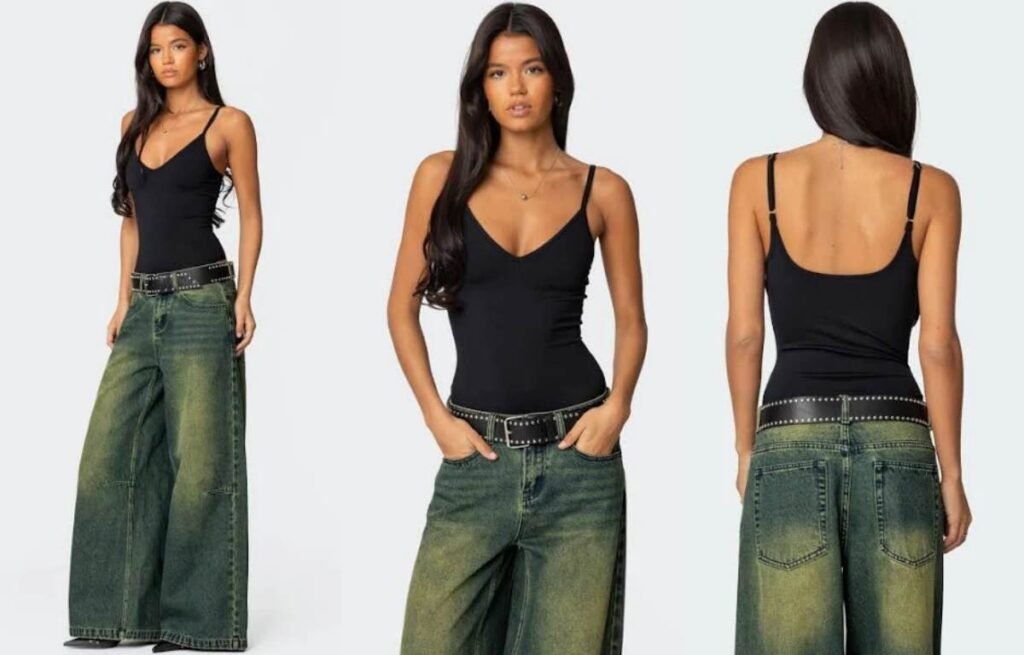
A bodysuit is a one-piece garment that fits like a top and connects under the crotch. The closure keeps the hem from riding up. The result is a flat waistline with no bunching. Necklines, sleeves, and bottom coverage vary by style and use.
Choose a bodysuit when you want a smooth tuck, clean layering, and stable necklines. It shines under high-waist pants, pencil skirts, and suiting. It also works as a base layer in winter and as a sleek top in summer. Pick stretch content and coverage based on the day’s plan.
Core Anatomy and Use Cases
Core parts
- Shell knit: body fabric with 2–4-way stretch.
- Gusset: cotton or modal lining for comfort and hygiene.
- Closure: snaps, hooks, or bonded placket.
- Elastic map: at leg openings, neckline, and sometimes waist.
| Feature | Options | Why it matters |
|---|---|---|
| Neckline | Crew, V, square, mock, plunge | Controls coverage and bra pairing |
| Sleeve | Sleeveless, cap, short, long | Season and dress code |
| Bottom | Thong, cheeky, brief | Trade-off between no-show and comfort |
How Do Fabric Choices Change Comfort, Control, and Breathability?
Fabric decides hand-feel, recovery, and heat management. Cotton feels natural. Modal drapes and stays cool. Nylon-spandex gives the sharpest line. Power mesh adds control where needed. I place mesh panels only where shaping helps, not across the whole body.
For everyday, I like cotton/modal with 6–8% spandex for stretch and recovery. For sleek looks under tailoring, I choose fine-gauge nylon-spandex. For shaping, I map power-mesh at the waist and back, while keeping the gusset soft and breathable.
Fabric Matrix and Performance
| Knit | Typical Content | Gauge | Use | Notes |
|---|---|---|---|---|
| Cotton-Spandex Jersey | 92–95% cotton / 5–8% spandex | 28–32 gg | Daily wear | Soft, breathable, easy care |
| Micro-Modal Jersey | 90–94% modal / 6–10% spandex | 32–36 gg | Warm climates | Cool touch, luxe drape |
| Nylon-Spandex Interlock | 72–78% nylon / 22–28% spandex | Fine | Sleek base | Highest recovery, smooths lines |
| Power Mesh | 60–70% nylon / 30–40% spandex | Open | Zoned control | Use in panels, not gusset |
| Rib Knit | Varies + 5–8% spandex | Rib 2×2 | Trend looks | Vertical texture hides lines |
Fabric tests I value: stretch % and recovery, pilling grade ≥4, colorfastness to sweat, shrinkage ≤3%.
How Does Fit, Torso Length, and Coverage Affect the Silhouette?
Bodysuits need negative ease. The fabric must stretch to match the body. Torso length is the most common fit issue. I offer regular, long, and petite. Bottom coverage changes VPL. Leg elastic tension must be balanced to avoid cutting.
Aim for 8–12% negative ease in width and 4–8% in length for everyday knits. Add more recovery for deep necklines. Offer two torso lengths when MOQ allows. Choose thong for no-show, cheeky for balance, and brief for comfort-first outfits.
Fit Map and Measurement Logic
Negative ease guide (everyday jerseys)
- Chest/waist/hip: pattern −8% to −12% vs body.
- Shoulder length: −3% to −5% to hold neckline.
- Torso length: −4% to −8% to prevent sag.
| Body Need | Pattern Tweak | Trim Tweak | Result |
|---|---|---|---|
| Long torso | +1.5–2.5 cm through body | Longer placket | No shoulder drag |
| Curvy hip | Add hip width + reduce leg tension | Softer elastic | Less VPL |
| Fuller bust | Raise armhole + add bust room | Stable neckline elastic | No gaping |
Which Closures, Gussets, and Seams Feel Best in Daily Wear?
Closures matter. Bad snaps ruin days. I choose smooth tape, low-profile snaps, and soft backing. I avoid thick seam stacks at the gusset. Flat seams reduce rub. I place labels away from the spine.
For comfort, I use 2–3 low-profile nickel-free snaps on a tricot-backed placket, cotton-lined gusset, and narrow FOE or brushed elastic at legs. I keep SPI consistent and bar-tack only where stress demands it.
Construction Details
Closure options
- Ring-spring snaps (8–10 mm): reliable, low bulk.
- Hook & eye micro placket: slim, dressy styles.
- Bonded placket: sleek, needs strict QC.
Seam choices
- Flatlock: very low profile, premium.
- 3-thread overlock + coverstitch: standard, stable.
- Bonded edges: modern look; test peel strength.
| Zone | Spec | Target |
|---|---|---|
| Gusset lining | 100% cotton or modal, 150–180 GSM | Breathable, soft next to skin |
| Snap pull test | ≥70 N combined | No pop-open |
| Leg elastic stretch | 85–95% applied | No cutting, no ride-up |
How Does a Bodysuit Compare to Leotards, Swimsuits, and Shapewear?
Bodysuits are daywear tops that stay tucked. Leotards are for dance. Swimsuits are for water and use chlorine-resistant yarns and linings. Shapewear focuses on compression and control zones. Some bodysuits overlap these groups, but specs differ.
Pick a bodysuit for outfits, not pools or studios. If you need swim, switch to chlorine-resistant nylon-spandex and swim linings. If you need firm control, use power-mesh mapping and stronger elastics, but keep gusset comfort high.
Side-by-Side
| Item | Fabric | Compression | Finish | Primary Use |
|---|---|---|---|---|
| Bodysuit (fashion) | Cotton/Modal or Nylon-Spandex | Light to medium | Soft hand | Daily outfits |
| Leotard | Nylon-Spandex, matte | Medium | High recovery | Dance/practice |
| Swimsuit | Chlorine-resistant blends | Medium | UV/anti-chlorine | Water use |
| Shapewear body | Power-mesh + warp knit | Medium to firm | Bonded panels | Silhouette control |
Mesh Top
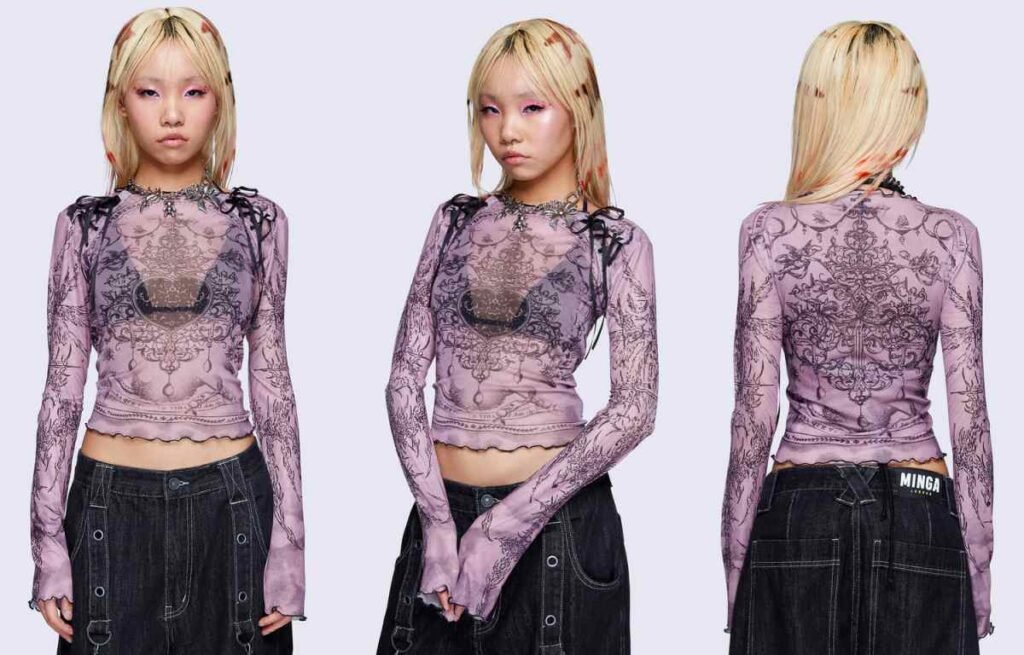
What Exactly Is a Mesh Top, and How Does It Function in Fashion?
A mesh top features a porous, grid-like texture that allows airflow and visual contrast. It may be fully sheer, partially lined, or paired with inner layers for coverage. Most designs are fitted or semi-fitted to enhance the play of skin, silhouette, and shadow.
Mesh tops function as both fashion-forward layering pieces and standalone tops that offer ventilation, visual edge, and modular styling. They’re essential in spring/summer wardrobes and in streetwear or festival aesthetics year-round.
Mesh as a Statement and Utility
| Purpose | Mesh Functionality | Styling Role |
|---|---|---|
| Breathability | Allows airflow, ideal for hot climates | Replaces traditional knits in warm weather |
| Aesthetic play | Reveals underlayers and skin | Adds depth and visual interest |
| Movement | Stretch mesh follows body curves | Perfect for dance, performance, or nightlife |
| Trend expression | Edgy, futuristic, or retro vibes | Core to streetwear and Gen Z fashion |
Mesh adds both technical and emotional value to apparel. It’s airy like organza, but grounded in utility like performance wear. Designers use it to flirt with exposure, to disrupt silhouettes, or to emphasize structure by layering with bras, tanks, or bralettes underneath.
How Do Material Choices Affect Comfort, Breathability, and Durability?
Mesh is all about fiber and knit structure. Most commercial meshes are made from polyester, nylon, or elastane blends, offering stretch, recovery, and durability. But sustainability is pushing brands toward recycled PET mesh (rPET) and bio-nylon options.
For comfort and longevity, nylon-spandex blends (85/15 or 80/20) deliver soft hand-feel, stretch, and shape retention. Recycled polyester meshes offer breathability with environmental impact reductions. Opt for soft-hand, warp-knitted meshes with high recovery and anti-pilling treatments.
Fabric Structure and Performance
| Type | Fiber Blend | Stretch | Best Use | Notes |
|---|---|---|---|---|
| Power Mesh | Nylon/Spandex (80/20) | 2-way or 4-way | Fitted designs, shapewear layering | High control, breathable |
| Fine Mesh | Nylon or rPET | Light stretch | Layering tops | Soft, sheer, flowy |
| Sports Mesh | 100% Polyester or blends | Minimal stretch | Athleisure | Durable, quick-dry |
| Tulle Mesh | Nylon, Polyester | Rigid | Occasion wear | Drapey, ethereal, less durable |
Tip: Avoid 100% poly meshes for direct skin contact if they lack softening finishes. Blended spandex improves comfort and reduces snagging.
Which Design Features Influence Its Look and Layering Power?
Mesh tops often rely on thoughtful design decisions: neckline shape, sleeve length, seam placement, and inner lining strategy. Sheerness invites intentional contrast. Design must balance sensuality and wearability.
Crewneck or mock neck styles feel modern, while scoop necks feel relaxed. Long-sleeve mesh tops are most versatile for layering, while short sleeves and tanks suit summer or festival vibes. Thumb holes, sleeve ruffles, or layered hems can elevate basic mesh into premium looks.
Pattern Engineering and Visual Balance
Key Design Variables:
Lining strategy:
- Full lining = modest
- Partial lining = style focus
- Unlined = layering essential
Panel play:
- Mesh sleeves + solid body = sporty
- Mesh yoke = subtle allure
- Full mesh = bold statement
Contrast elements:
- Stitch color or grosgrain trim for definition
- Embroidery or screenprint for branding
Mesh Styles You Can Offer:
| Mesh Variant | Description | Market Appeal |
|---|---|---|
| Classic Sheer Mesh Tee | Fitted, high-stretch, long-sleeve | Clubwear, streetwear layering |
| Panel Insert Mesh | Mesh used only in sleeves or back | Activewear, casual tops |
| Printed Mesh | Allover sublimation or flocking | Bold visuals, Gen Z appeal |
| Layered Mesh | Double-layered with tonal base | Luxe, minimal branding |
| Rhinestone Mesh | Embellished with studs or foil | Performance, partywear |
Where Do Mesh Tops Sit in Streetwear, Sportswear, and Nightwear?
Mesh is no longer limited to clubs or concerts. Streetwear brands treat it like a base layer. Athleisure brands add mesh inserts to control heat zones. Lingerie-inspired mesh tops are styled for casual daytime wear with denim or cargo pants.
Mesh tops function across multiple categories—styled over bras for nightlife, under jackets for work, or over tanks for weekend errands. It’s a category-blender: it can be both revealing and refined.
Style Segmentation
| Segment | Mesh Use | Popular Looks |
|---|---|---|
| Streetwear | Graphic mesh tees, layered bodysuits | Oversized mesh with logo bras |
| Athleisure | Mesh yoke/back inserts, racerback tanks | Gym-to-street wear |
| Partywear | Rhinestone or printed mesh | Club looks, neon or metallics |
| Contemporary | Mesh base under blazers or satin tops | Clean, minimalist aesthetics |
| Festival/Boho | Embroidered or crochet-inspired mesh | Mixed with fringe, denim, lace |
Important: The rise of genderless fashion also welcomes mesh as a shared category across men’s and women’s wear, especially in neutral colors and oversized fits.
Sheer Top
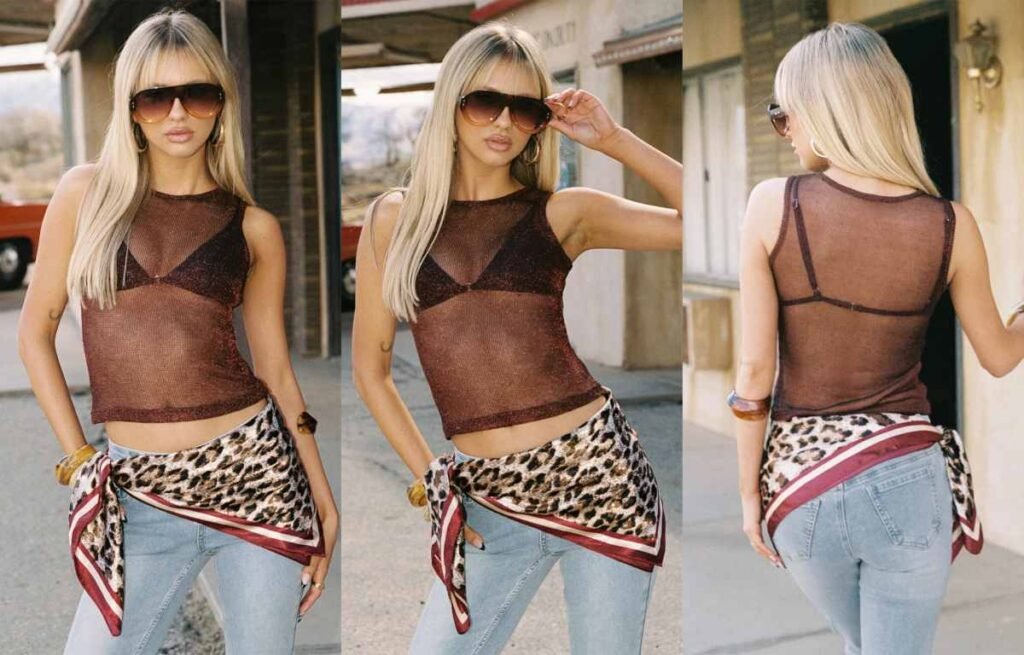
What Defines a Sheer Top, and How Is It Used in Modern Styling?
Sheer tops are lightweight garments that allow partial visibility through the fabric. They’re not only aesthetic—sheer tops bring dimension, texture, and contrast to a wardrobe. Unlike mesh tops, sheer fabrics tend to be finer and more fluid.
Sheer tops are translucent garments that serve as both visual focal points and versatile layering pieces. They range from elegant blouses to edgy cropped styles, worn over or under contrasting items to create depth in styling.
The Role of Sheer in Style Language
| Fashion Role | Impact |
|---|---|
| Transparency | Adds intrigue, sensuality, contrast |
| Texture | Introduces floaty, light movement |
| Versatility | Layers with bralettes, camisoles, or suits |
| Style Range | Fits both formal and streetwear aesthetics |
In essence, sheer tops let the inner layer speak. Whether it’s a sleek bodysuit or a lace bra, the base transforms the sheer layer from modest to bold, casual to high fashion.
Which Fabrics Are Best for Sheer Tops and Why Do They Matter?
Material makes or breaks a sheer top. You need the right balance of weight, drape, and durability. Some sheer fabrics drape fluidly, while others hold architectural shapes. The hand-feel, gloss level, and resilience of the fabric define the quality.
Popular sheer fabrics include chiffon, organza, tulle, voile, and georgette. For performance-driven pieces, mesh and power tulle are added. Sustainable choices now include recycled polyester chiffons and bio-nylon tulles.
Fabric Matrix for Sheer Tops
| Fabric | Weight | Drape | Transparency | Ideal Use |
|---|---|---|---|---|
| Chiffon | Light | Soft flow | High | Romantic blouses, layers |
| Organza | Medium | Crisp, holds shape | Medium | Statement sleeves, structure |
| Georgette | Light | Slightly grainy drape | Medium | Everyday sheer tops |
| Tulle | Very light | Stiff or stretch | High | Layered fashion, occasionwear |
| Voile | Light | Soft, dry hand | Medium | Summer sheer tops |
| Mesh (fine gauge) | Light | Stretchy | High | Edgy, fitted styles |
Note: For lingerie-inspired designs, stretchable mesh or tulle offers body-hugging fit with visibility. For blouse-type silhouettes, woven organza or voile offers elegance with stiffness.
How Do Designers Balance Exposure and Structure in Sheer Garments?
Sheer garments walk a fine line. Too much exposure can feel impractical; too little can mute the fashion message. Designers often use techniques like double layering, panel blocking, and partial lining to create contrast and balance.
Strategic use of opacity through lining, placement of ruffles or embroidery, and smart layering allows sheer tops to remain wearable and flattering. Necklines and sleeve choices play a key role in how exposed or structured the top feels.
Functional Transparency
Techniques that add coverage or structure:
- Lining panels: For bust or yoke zones
- Blocked opacity: Pairing sheer with solid fabrics
- Pleats or ruffles: Adds volume, texture, and concealment
- Contrast binding: Defines structure and shape
- Layered overlays: Dual chiffon layers for visual depth
Structural construction tips:
- Use French seams or baby seams for clean interiors
- Add fusible tape at neckline and shoulder for stability
- Avoid heavy trims that pull delicate fabric
| Design Detail | Impact |
|---|---|
| High neck + sheer sleeves | Sophisticated, semi-formal |
| Sheer yoke + opaque body | Trendy yet modest |
| Sheer all-over + base layer | Bold, statement piece |
What Styling Techniques Work Best With Sheer Tops?
Styling sheer tops is about contrast and confidence. A sheer top can look edgy, romantic, or modern depending on how it’s layered. From minimal street looks to eveningwear, sheer tops adapt to the wearer’s styling intent.
Layer sheer tops over fitted camisoles, contrast bralettes, or bodycon dresses. For structure, use tailored blazers or high-waisted pants to ground the floaty texture. Pair with leather, denim, or satin for high-low styling.
Styling Playbook
Smart Layering:
- Monochrome layers: For sleek, elongated looks
- Contrast bralettes: To highlight neckline and shoulder cuts
- Under suits: Adds feminine softness to tailored shapes
- Over dresses: Works like a shrug or capelet overlay
Pairing Ideas
| Bottom | Sheer Top Combo | Occasion |
|---|---|---|
| Wide-leg trousers | Tucked-in chiffon blouse | Office or dinner |
| Denim skirt | Sheer cropped mesh tee | Streetwear |
| Bias-cut satin skirt | Long sleeve sheer with lace lining | Evening |
| Cargo pants | Oversized sheer button-down | Trendy casual |
Feather Top
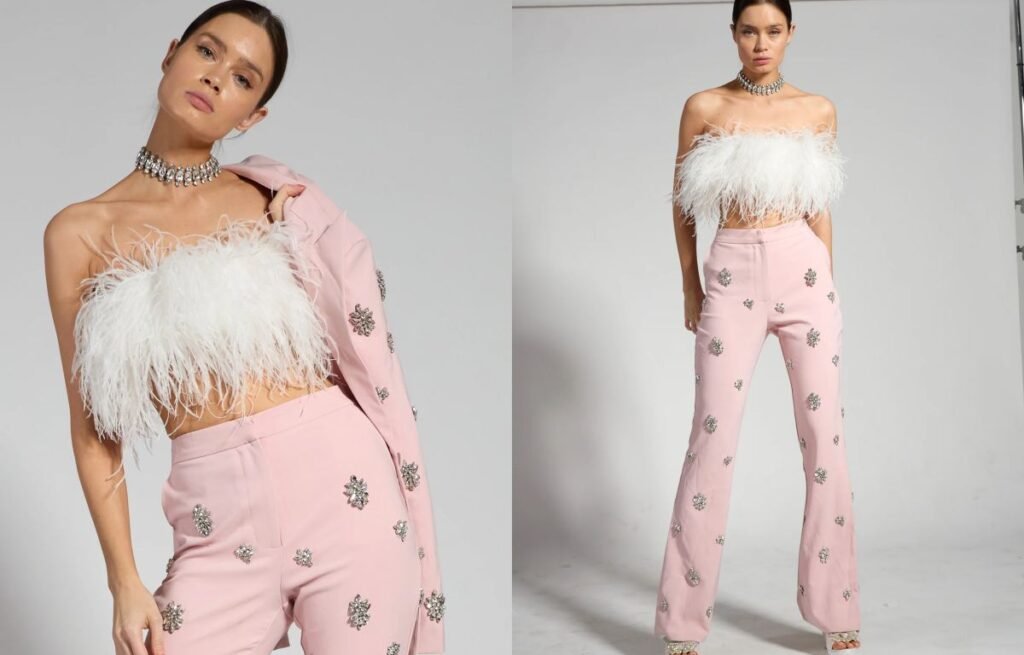
What Exactly Is a Feather Top, and Where Is It Used?
Feather tops are garments that feature feather trims or full-feather construction to create a soft, luxurious, and often whimsical aesthetic. They may come as strapless bandeaus, tank tops, off-shoulder blouses, or even long-sleeve pieces.
Feather tops are most commonly used in eveningwear, partywear, and statement fashion collections. Their visual and tactile texture makes them ideal for social occasions, red carpet looks, or editorial shoots.
The Fashion Language of Feathers
Feathers symbolize both elegance and edge. While they’ve been used for centuries in haute couture, they’ve recently returned to commercial fashion via:
- Marabou-trimmed camisoles and tube tops
- Ostrich feather cuffs on blazers
- Full-feather bandeaus or crop tops in party collections
- Feather-detail sleeves or collars on knits or silk shirts
Fashion-wise, feather tops sit at the intersection of playfulness and luxury, offering high sensory appeal with a bold twist.
Which Feather Types or Alternatives Are Best for Fashion Garments?
Choosing the right feather type—and whether to use real or faux—is critical. Real feathers bring authenticity and natural motion, while faux options provide easier care and ethical appeal.
Ostrich and marabou feathers are the most commonly used real feathers for tops, while faux options are often made of polyester thread, mesh fringing, or laser-cut satin. Each comes with different care, movement, and cost profiles.
Feather Options in Detail
| Type | Look & Feel | Pros | Cons | Ideal Use |
|---|---|---|---|---|
| Ostrich | Long, airy, soft | Premium, luxurious, flowing | Expensive, delicate | Hem trims, full feather tops |
| Marabou | Fluffy, plush | Lightweight, fluffy texture | Sheds easily, less durable | Neckline/cuff detail |
| Rooster/Hackle | Edgy, stiff, layered | High drama, bold look | Sharp, less wearable | Avant-garde, fashion shows |
| Faux Feathers | Mesh + fray or laser-cut | Vegan-friendly, washable | Less realistic motion | Budget-friendly, easier care |
Note: Brands targeting Gen Z or conscious consumers should explore recycled faux-feather trims made from rPET or biodegradable yarns.
What Are the Key Design Considerations for Feather Tops?
Designing a feather top goes far beyond adding trim. You must balance feather weight, placement, support structure, and silhouette. Poor placement or overuse leads to awkward volume or damage during wear.
The best feather tops use strategic feather placement—typically at hems, cuffs, necklines, or as bodice overlays—with reinforced seams and minimal friction points. Silhouettes are kept clean to let the texture shine.
Pattern and Construction Logic
Key Considerations:
- Stitch vs. Glue Attachment: Stitching is stronger and more durable but requires clean finishing
- Backing Support: Use twill tape or mesh as a base for feather stitching
- Feather Direction: Always align feathers downward for natural drape
- Hem Weight Management: Avoid heavy feathers on light fabrics like chiffon without reinforcement
Feather Trim Placement Examples:
| Area | Visual Effect | Design Tip |
|---|---|---|
| Neckline | Softens frame | Use narrow marabou on camisoles |
| Cuff/ Sleeve | Adds drama | Balance with simple body silhouette |
| Hemline | Flirtatious finish | Ideal for mini-length tops |
| Full Bodice | High-impact | Use lightweight ostrich and secure fully |
Ensure fabric compatibility: avoid silk satins with heavy feathers unless reinforced. Best pairings include crepe, ponte, velvet, and medium-weight satin.
How Do You Style Feather Tops for Different Occasions?
Styling feather tops is about letting the texture take center stage. You don’t need much else—this is the statement piece. The key is balance: pair with clean lines, solid neutrals, and complementary textures.
Feather tops are best styled with tailored pants, satin skirts, or minimal denim. For formal looks, add structured outerwear like blazers. For partywear, pair with sequins, leather, or sleek heels. Keep accessories minimal.
Occasion-Based Styling Playbook
| Occasion | Bottom Pairing | Footwear | Notes |
|---|---|---|---|
| Cocktail Party | Satin bias skirt | Strappy heels | Keep colors monochrome |
| Fashion Night Out | Leather pants | Platform boots | Add blazer for structure |
| Street Style | Wide-leg denim | Sneakers | Contrast texture makes it wearable |
| Resort Look | Linen shorts | Slides | Add feather crop top in pastels |
Tip: Avoid feather overload. Keep balance—if the top is feathered, opt for sleek hair and matte makeup for contrast.
Metallic Top
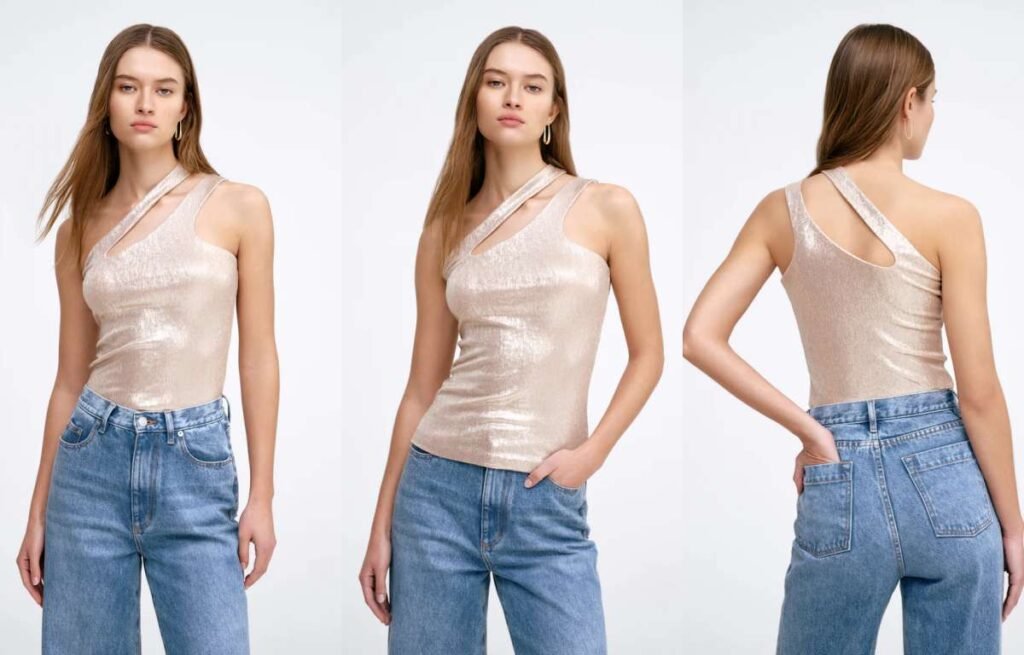
What Is a Metallic Top and Why Is It Trending?
Metallic tops are tops made from fabrics that reflect light with a shiny, glossy, or holographic finish. They range from minimal shimmer to bold chrome and come in various forms—bandeaus, wrap blouses, cropped tanks, puff-sleeve blouses, or oversized tees.
Metallic tops are trending due to their statement-making effect, especially in social media-driven fashion and festival scenes. They’re bold, camera-friendly, and associated with futuristic, empowered aesthetics.
Cultural Drivers of the Metallic Trend
Metallics have surged due to:
- The “Futurecore” Aesthetic: Think silver, armor, chrome—driven by AI and sci-fi influence
- Festival Culture: Shimmering pieces dominate Coachella, Burning Man, and rave scenes
- Partywear Resurgence: Post-pandemic celebrations demand bold fashion
- Social Media Impact: Metallics photograph well under artificial light and flash
On TikTok, keywords like “liquid metal top” and “silver crop” consistently trend during the holiday and music festival season.
What Fabrics and Finishes Create the Metallic Effect?
Not all metallics are made equal. The level of sheen, structure, and comfort depends on fabric base and metallic finish technique.
Common fabrics include lamé (woven with metallic threads), foil-coated knits, Lurex jersey, and metallized PU blends. Techniques include hot stamping, foil printing, and fiber-level metallic blends.
Fabric Technology Breakdown
| Fabric Type | Composition | Sheen | Drape | Ideal Use |
|---|---|---|---|---|
| Lurex Jersey | Poly/Lurex blend | Subtle shimmer | Stretchy | Bodycon or wrap tops |
| Lamé | Nylon/poly + metallic | High gloss | Crisp | Structured tops, bustiers |
| Foil Knit | Poly/spandex + foil layer | Mirror finish | Moderate stretch | Cropped tanks, statement tees |
| Metallic Satin | Satin weave + dye or print | Soft glow | Smooth, elegant | Evening blouses |
| PU-Coated Mesh | Sheer mesh + silver film | Liquid shine | Flexible | Festivalwear, overlays |
Note: Some high-end versions use metallized silk or silk-organza with micro-lamé weaves, but these are costlier and delicate.
How Do You Design for Shine Without Compromising Comfort?
The main challenge with metallic tops is balancing visual impact with wearability. Some metallics feel plasticky or stiff, while others lose shape quickly. Design must account for stretch, breathability, and movement.
Comfortable metallic tops typically use lightweight stretch knits, partial linings, and loose silhouettes. Heat retention and stiffness must be addressed with breathable bases or smart pattern cuts.
Design Considerations
For Comfort:
- Use knits or blended Lurex fabrics with spandex for stretch
- Add lightweight linings in sensitive areas (bust, underarms)
- Use open-back or cutout designs to improve airflow
For Shine Management:
- Avoid excessive seaming that may distort metallic finish
- Use clean edges (e.g., folded hems or binding) to reduce fray
- Choose reflective trim or piping only if compatible with base fabric
| Design Tip | Result |
|---|---|
| Oversized foil tee + crewneck | Bold but wearable |
| Metallic wrap top + lining | Elevated and breathable |
| Bandeau with full foil + mesh lining | Instagram-ready statement piece |
What Styling Works Best with Metallic Tops?
The best metallic tops are styled with minimalist elements that let them shine—literally. Because they’re so reflective, they don’t need much layering or accessorizing.
Pair metallic tops with neutral bottoms like black pants, denim, or tailored skirts. Add structured outerwear to contrast the fluid shine. For streetwear, mix with cargo, leather, or oversized silhouettes.
Occasion-Based Styling Ideas
| Occasion | Metallic Top Style | Pair With | Notes |
|---|---|---|---|
| Festival | Foil cropped tank | Cargo pants + boots | Add shades, mini bag |
| Party | Silver halter or bandeau | Satin skirt + heels | Statement earrings only |
| Street Style | Oversized metallic tee | Wide-leg jeans + sneakers | Use matte accessories |
| High Fashion | Gold wrap blouse | White trousers + blazer | Tone-on-tone styling |
Pro tip: To make metallics wearable for daytime, opt for brushed finishes or low-gloss Lurex blends in earthy tones like bronze or champagne.
Sequin Top
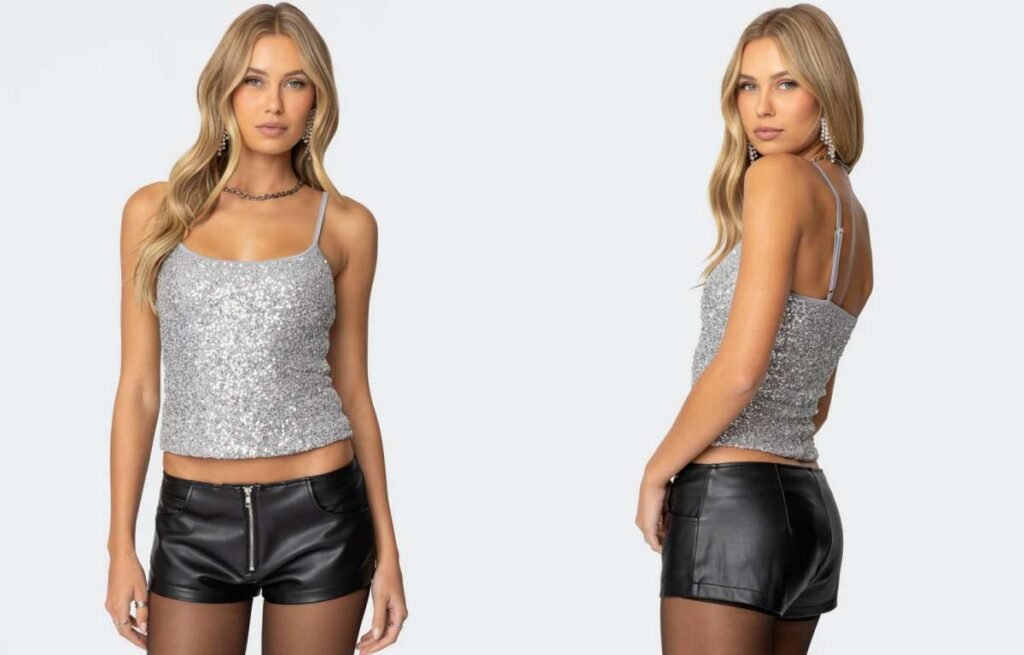
What Exactly Is a Sequin Top, and Why Is It Popular?
Sequin tops feature rows of flat or cupped discs that shimmer under light, sewn or glued onto a base fabric. These pieces are show-stoppers—used in partywear, concerts, NYE collections, and now even casual layering.
Sequin tops are popular because they deliver maximum sparkle with minimal styling effort. They capture light, elevate energy, and add a festive or glamorous vibe to any outfit.
Dive Deeper: Cultural and Seasonal Momentum
Sequin tops rise in popularity during:
- Holiday seasons (Christmas, NYE, Lunar New Year)
- Music festivals and fashion shows
- Award seasons and red carpet moments
- Clubwear and K-pop inspired looks
They’re a quick confidence boost and fit perfectly into the “dopamine dressing” trend—fashion that makes people feel joyful and bold.
What Types of Sequins and Base Fabrics Are Commonly Used?
Not all sequins are made equal. Some are subtle and flat; others are oversized, 3D, or holographic. The base fabric matters too—it defines the top’s structure, drape, and stretch.
The most common sequin types include flat, cupped, holographic, reversible (flip), and shaped sequins (stars, hexagons). Base fabrics often include mesh, tulle, jersey, velvet, or satin to support the embellishment.
Material Matrix
| Sequin Type | Look | Movement | Usage |
|---|---|---|---|
| Flat | Smooth, minimal shine | Subtle shimmer | Day-to-night tops |
| Cupped | Concave for extra reflection | Medium to high sparkle | Party blouses |
| Reversible (Flip) | Dual-tone flip effect | Interactive | Social media-friendly designs |
| Holographic | Rainbow glow | High shine | Festival fashion |
| Shaped | Stars, hearts, etc. | Bold accents | Y2K or youth styles |
| Base Fabric | Stretch | Support | Ideal Application |
|---|---|---|---|
| Mesh/Tulle | High | Breathable | Lightweight layering tops |
| Jersey | Medium | Flexible | Fitted or ruched sequin styles |
| Velvet | Low | Lux look | Retro or high-glam tops |
| Woven Satin | Low | Smooth | Classic evening styles |
Note: Sequins are generally sewn using a chain-stitch embroidery machine or manually applied for couture-level precision.
How Can Designers Balance Shine, Fit, and Comfort in Sequin Tops?
One challenge with sequin tops is wearability. Without thoughtful design, they can scratch skin, overheat, or feel stiff. Modern solutions focus on placement, lining, and mobility.
To improve comfort, use stretch linings, avoid full-sequin coverage in underarm or side seams, and ensure the top has breathable zones. Soft mesh or rayon lining helps prevent chafing.
Smart Design for Sequin Comfort
Construction Tips:
- Use partial lining: Only where skin touches (e.g., underarm, back)
- Add bias tape finishing on neckline and armholes to shield raw sequin edges
- Consider spandex-blend backing for flexibility
- Avoid placing sequins over bust darts or seams—use sequin-appliqué panels instead
| Design Feature | Comfort Result |
|---|---|
| Stretch jersey base | Fitted but flexible movement |
| Mesh paneling under arms | Breathability |
| Clean neck/sleeve finish | Reduces skin irritation |
| Sequins only on front | Keeps back cool for long wear |
Tip: Always clarify if sequins are glued or sewn—sewn-on sequins last longer and have better drape during wash/wear.
How to Style Sequin Tops Without Overdoing the Look?
Styling sequin tops is about balance. Let them shine by keeping everything else clean, matte, or structured. That contrast helps sequins pop without overwhelming the eye.
Pair sequin tops with solid basics like high-waisted denim, tailored trousers, or satin skirts. For casual wear, layer under blazers or oversized jackets. Limit accessories—let the top speak for itself.
Styling Scenarios
| Style | Pairing | Notes |
|---|---|---|
| Casual Day | Sequin tank + denim jacket | Adds sparkle to everyday |
| Dinner Date | V-neck sequin blouse + trousers | Romantic and chic |
| Party Look | Full sequin cami + leather skirt | Contrast texture is key |
| Red Carpet | Long sleeve sequin top + wide-leg pants | Monochrome keeps it elegant |
| Festival | Holographic sequin crop + cargo pants | Statement-ready |
For versatility, consider sequin tops with matte sleeves, panel blocking, or mixed-media materials.
Performance Tee
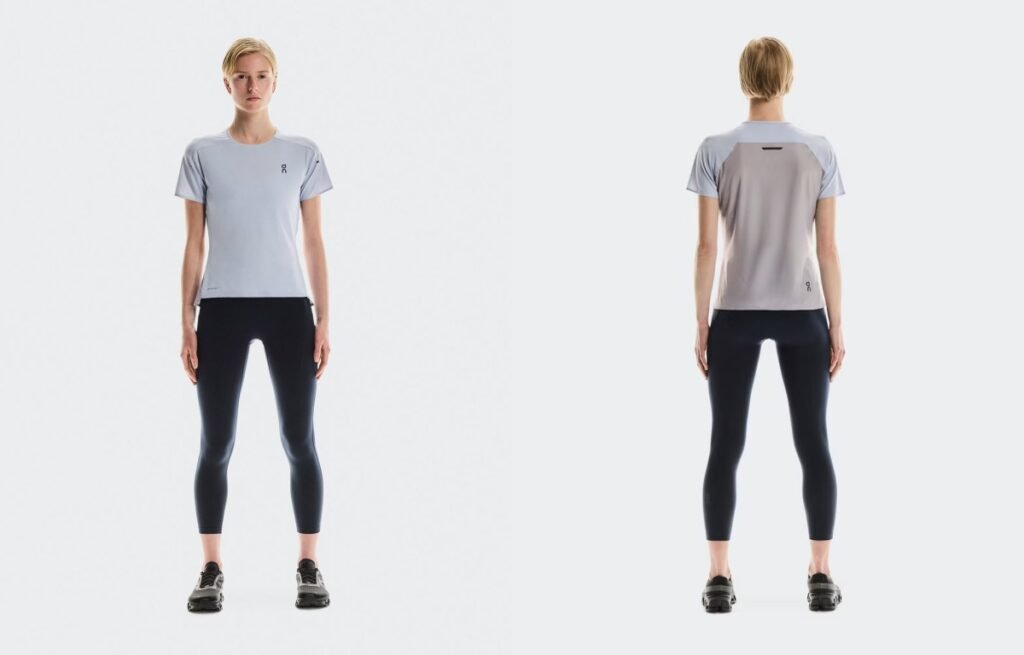
What Is a Performance Tee and Who Is It For?
Performance tees are not just T-shirts with sporty branding—they’re garments designed to enhance athletic performance, reduce discomfort during movement, and provide long-lasting durability under sweat and friction.
A performance tee is primarily targeted at athletes, fitness enthusiasts, and consumers seeking high-function apparel for activities like running, yoga, HIIT, and hiking—but also appeals to the athleisure and travel markets.
User Needs and Market Segments
| User Segment | Key Requirements | Example Use |
|---|---|---|
| Fitness Enthusiasts | Moisture-wicking, fast-drying | Gym workouts, HIIT |
| Runners | Breathability, anti-chafe seams | 5K runs, marathons |
| Yoga/Pilates | Stretch, softness | Low-impact mobility |
| Outdoor/Travel | UV protection, odor control | Hikes, camping, travel |
| Casual Consumers | Comfort, minimal branding | Streetwear, daily wear |
Modern consumers expect multi-functional apparel: one top that can perform in the gym, look stylish on the street, and stay fresh on the go.
What Fabrics and Technologies Make a Tee ‘Performance-Grade’?
Performance tees stand apart thanks to advanced textile engineering. Fabric blends, finishing treatments, and construction all affect performance outcomes like sweat management, odor resistance, and movement range.
Top fabrics include polyester-spandex blends, nylon microfibers, or modal with technical finishes like moisture-wicking, antimicrobial, anti-pilling, and UV protection. Mesh paneling and laser-cut vents increase airflow.
Fabric Science & Innovation
| Fabric Type | Performance Trait | Use Case |
|---|---|---|
| Polyester-Spandex | Stretch + fast-drying | Training, CrossFit |
| Nylon Microfiber | Lightweight + breathable | Running, outdoor wear |
| Modal Blends | Soft touch + moisture absorption | Yoga, low-impact fitness |
| Recycled Poly (rPET) | Sustainable + tech-treated | Eco-conscious collections |
Key Functional Technologies:
- Moisture-Wicking: Pulls sweat to the surface to evaporate
- Anti-Odor (Polygiene or silver ion): Inhibits bacterial growth
- 4-Way Stretch: Enables multidirectional movement
- UV Protection (UPF 30+): Ideal for outdoor sports
- Anti-Pill Coating: Maintains long-term fabric integrity
Tip: Always ask suppliers for test certifications (e.g., AATCC 197 for drying rate, ASTM D4966 for abrasion).
How Do Fit and Design Affect Performance in Activewear Tops?
Fit is crucial for comfort and function. A poorly cut performance tee restricts movement or causes irritation. Strategic design choices like raglan sleeves, flatlock seams, and ventilated zones make a huge difference.
Optimal performance tees offer ergonomic seams, contoured fits, and targeted ventilation. Designs should allow full mobility without riding up or clinging uncomfortably to sweat zones.
Design Engineering Insights
Key Design Features:
| Feature | Function |
|---|---|
| Raglan Sleeves | Improves range of motion in shoulders |
| Flatlock Seams | Prevents chafing during repetitive motion |
| Curved Hem or Drop-Tail | Avoids ride-up during lifts or stretches |
| Side Mesh Panels | Improves airflow and sweat dispersal |
| Minimal Branding | Increases versatility (gym to street) |
Fit Profiles:
| Fit Type | Best For |
|---|---|
| Compression Fit | Muscle support, reduced vibration (pro training) |
| Fitted/Athletic Fit | Sculpted silhouette with stretch (most popular) |
| Relaxed Fit | Comfort-first wearers, layering purposes |
When developing your collection, offer 2–3 fit options to accommodate various performance and fashion needs.
How to Style Performance Tees Beyond the Gym?
Thanks to athleisure trends, performance tees are now worn far beyond fitness settings. Minimalist designs and fashion-conscious fits allow these tops to blend into everyday and travel wardrobes.
For street styling, pair performance tees with cargo joggers, sleek leggings, or structured outerwear. Use monochrome palettes, tech accessories, or layered looks to complete the aesthetic.
Athleisure Styling Strategies
| Look | Pieces | Notes |
|---|---|---|
| Sport Luxe | Performance tee + tailored trousers + clean sneakers | Add watch or cap |
| Airport Core | Relaxed performance tee + biker shorts + crossbody bag | Choose neutral colors |
| Layered Street | Longline tee under denim or bomber jacket | Layer textures |
| Active Daywear | Cropped performance tee + high-rise leggings | Color blocking works well |
Functional style is here to stay—design performance tees with streetwear versatility in mind, not just athletic utility.
Sun Protection Top
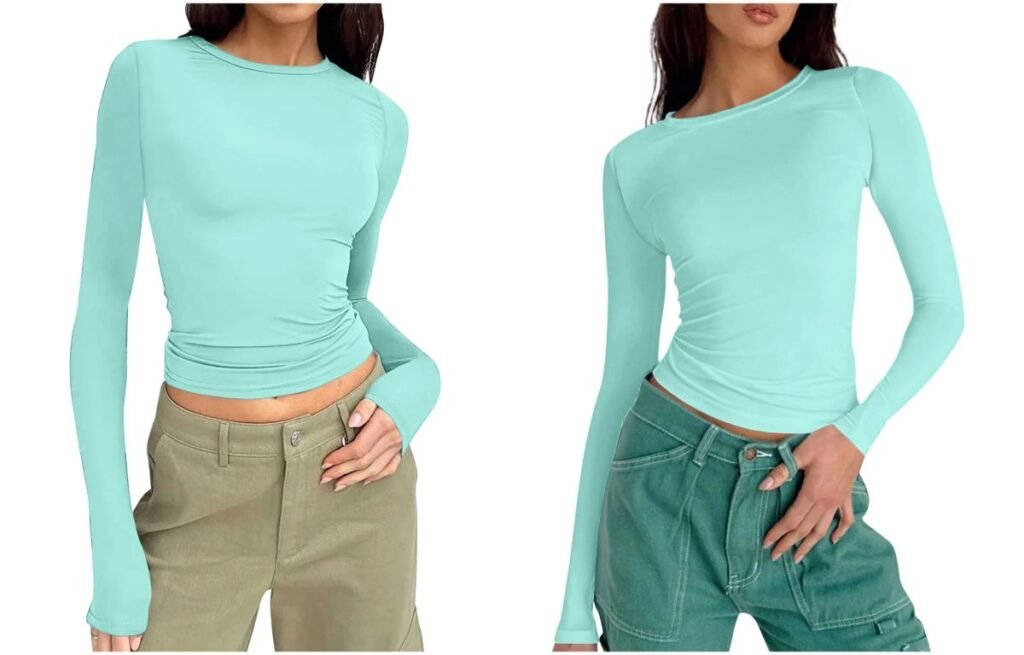
What Is a Sun Protection Top and Why Is It Growing in Popularity?
Sun protection tops shield the skin from harmful ultraviolet (UV) rays. Unlike regular tops, they are made from specially treated or tightly woven fabrics that block UVA and UVB radiation.
The rise in outdoor fitness, skin cancer awareness, and tourism has fueled global demand for sun protection tops—particularly in markets like the U.S., Australia, and Southeast Asia.
Lifestyle Trends Behind the Surge
- Outdoor Fitness Boom: Running, hiking, paddling, and cycling demand better UV coverage
- Travel Fashion: Lightweight, packable tops that offer sun protection are ideal for destinations with high UV index
- Health Awareness: Consumers are more informed about sun damage and long-term skin health
- Athleisure Crossover: Performance sun tops now blend into everyday casual wear for hot climates
Data point: The global sun protective clothing market is expected to grow at 7–9% CAGR through 2030, especially in women’s wear and kidswear.
What Fabric Technologies Enable UV Protection in Clothing?
Sun protection is achieved through either tight fabric construction or chemical/physical treatments that reflect, absorb, or scatter UV rays.
Common materials include polyester, nylon, bamboo, and blends treated with UV-inhibiting agents. Look for garments rated with UPF (Ultraviolet Protection Factor) 30, 40, or 50+.
How Fabric Blocks UV
| Technology | Description | Effectiveness |
|---|---|---|
| Tight Weave Density | Less space between yarns | Physical barrier (natural UPF 20–40) |
| UV-Blocking Treatments | Titanium dioxide or zinc additives | Boosts UPF to 50+ |
| Dye-Based Enhancement | Darker colors absorb more UV | Black/blue more protective than white |
| Fiber Type | Polyester > Nylon > Cotton | Polyester reflects most UV |
UPF Ratings Overview:
| UPF Rating | UV Blocked | Protection Level |
|---|---|---|
| 15–24 | 93%–96% | Good |
| 25–39 | 96%–97.5% | Very Good |
| 40–50+ | 97.5%–99% | Excellent |
Tip: UPF protection may degrade over time with washing or sweat—reapply chemical treatments if needed, or use long-lasting fiber technology.
How Do You Design Sun Protection Tops for Function and Comfort?
Designing these tops is about balancing UV coverage, temperature control, and movement flexibility. Too heavy and it overheats; too light and it may not protect effectively.
The best sun protection tops use lightweight, breathable knit or woven fabrics with flat seams, mesh panels, and ergonomic patterns. They often include features like thumbholes, mock necks, and extended back hems.
Design Best Practices
| Design Feature | Benefit |
|---|---|
| Long Sleeves + Thumbholes | Hand and wrist protection |
| Mock Neck / Funnel Neck | Added neck coverage |
| Curved Drop-Tail Hem | Better coverage when bending or hiking |
| Mesh Back Panels | Increased breathability |
| Anti-chafe Flatlock Seams | Comfort during movement |
| Packable/Lightweight | Great for travel and layering |
Functional accessories like hidden zip pockets, hoods, or convertible sleeves can add even more utility.
How to Style Sun Protection Tops for Active, Travel, or Daily Use?
These tops are no longer just for performance—they’re moving into athleisure and casual resortwear thanks to better fits, colors, and designs.
Style with high-rise leggings, hiking shorts, utility joggers, or cargo pants. Choose tonal colors or pastel shades for a calm, outdoorsy look.
Styling Options for Different Audiences
| Audience | Style Strategy |
|---|---|
| Hikers/Trekkers | Combine with trail shorts, hydration packs, and sun hats |
| Runners | Use lightweight layers, reflective trims, and compression tights |
| Resortwear Travelers | Match with flowy UV-protection pants, sandals, and large visors |
| Casual Wearers | Pair with cropped utility pants, sneakers, and tech backpacks |
Fabric color matters too: light colors stay cooler, while darker tones offer better UV blockage.
Nursing Top
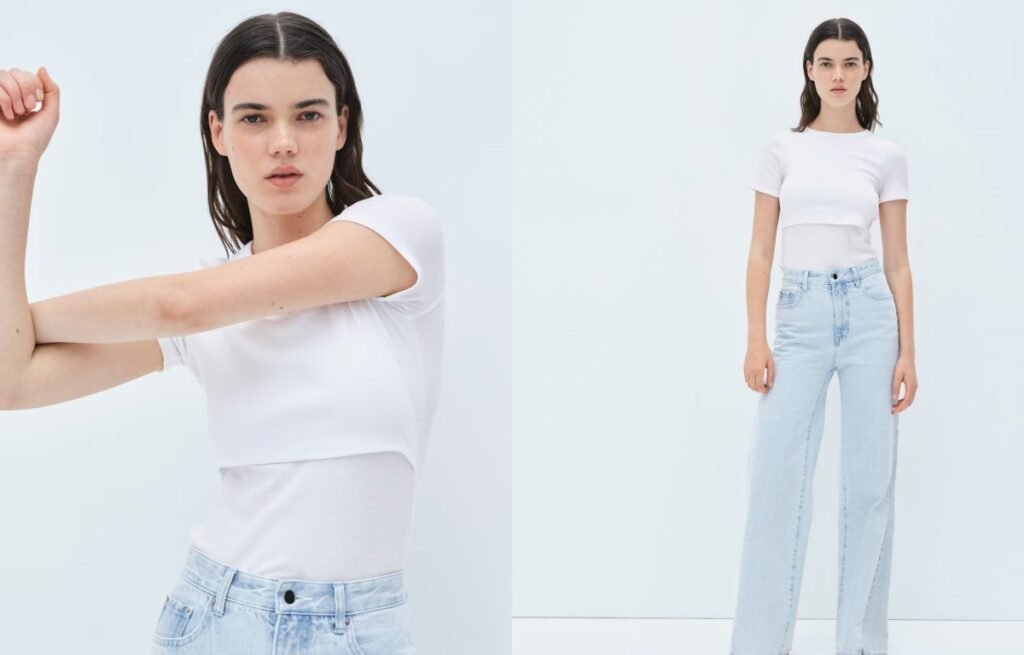
What Is a Nursing Top and Why Is It Important for Postpartum Women?
Nursing tops support the physical and emotional needs of breastfeeding mothers. By allowing easy, discreet access for nursing or pumping, they reduce wardrobe stress and offer dignity and convenience in public or social settings.
A nursing top improves daily comfort, makes breastfeeding less stressful, and enables mothers to maintain their sense of identity and personal style during the postpartum phase.
The Real-Life Context of Nursing Wear
- Convenience: Enables one-handed access while holding the baby
- Modesty: Offers privacy during nursing in public or family spaces
- Confidence: Helps new moms feel “put together” despite physical changes
- Mental Comfort: Reduces anxiety in the early stages of breastfeeding
Nursing apparel isn’t just about zippers or flaps—it’s about helping women reclaim their agency during a vulnerable time.
What Are the Different Access Designs Used in Nursing Tops?
There are multiple access designs used across various nursing top styles. Each comes with pros and cons depending on body type, activity level, and aesthetic preference.
The five most common access styles are: double-layer lift-up, side-seam zippers, drop-down panels, wrap-front overlaps, and button-down openings.
Comparing Access Mechanisms
| Access Type | Description | Pros | Cons |
|---|---|---|---|
| Lift-up Layer | Hidden top layer lifts to reveal nursing opening underneath | Very discreet, no hardware | Can feel bulky |
| Side Zippers | Invisible zippers hidden at bust or side seams | Secure, modern look | Requires both hands |
| Drop-down Clip Panel | Clips or hooks drop the front panel | Easy one-handed operation | Less fashion-forward |
| Wrap or Cross-front | Wrap styling pulls aside | Blends with casual/boho styles | May lose shape after wear |
| Button-down Front | Opens via placket or shirt buttons | Timeless and easy to layer | Slower than other styles |
Recommendation: Combine a fashion-forward silhouette with a discreet access mechanism to create pieces that sell well and earn brand loyalty.
What Fabrics and Construction Are Best for Nursing Wear?
Postpartum skin can be sensitive and hormonal shifts may cause sweating or irritation. That’s why softness, stretch, and breathability are key in fabric selection.
Best fabric choices include cotton-modal blends, bamboo rayon, TENCEL™, or OEKO-TEX certified jersey knits. Use flatlock seams and elastane blends for stretch and recovery.
Ideal Material Profiles
| Fabric Type | Benefits | Notes |
|---|---|---|
| Cotton-Modal | Soft, moisture-absorbing, affordable | Good for loungewear styles |
| Bamboo Rayon | Naturally anti-bacterial, breathable | Best for skin sensitivity |
| TENCEL™ Modal | Luxuriously soft and sustainable | Ideal for premium collections |
| Stretch Jersey (Cotton + Spandex) | Durable with great recovery | Great for casual and fitted tees |
Construction Notes:
- Double layer at bust must remain breathable and thin
- Use minimal seam bulk to reduce pressure on breast/chest area
- Avoid exposed tags—prefer heat-transfer labels
- Consider nursing pad placement and potential leakage areas
Softness isn’t a luxury here—it’s a core functional requirement. Avoid polyester-heavy blends unless moisture-wicking is critical.
How Can Nursing Tops Be Stylish Yet Functional for Daily Use?
Today’s nursing moms don’t want to sacrifice personal style for practicality. The challenge is to hide the utility, not the beauty of the garment.
Use fashion-forward elements like ruching, cross-wraps, shirring, or draped details to make nursing tops blend seamlessly into modern wardrobes.
Styling Examples & Fashion Cues
| Style Type | Feature | Target Use |
|---|---|---|
| Tunic-style Wrap Top | Cross-front with inner layer | Ideal for work or outings |
| Henley Nursing Tee | Partial button placket | Everyday basic |
| Empire Waist Tank | Lift-up double layer with shirred bust | Postpartum belly coverage |
| Zip Nursing Hoodie | Side seam zip with kangaroo pocket | Athleisure / errands |
| Soft Knit Blouse | Hidden side access under folds | Semi-formal gatherings |
Additional Fashion Touches:
- Side slits for flow and fit
- Extended back hem for coverage
- Neutral tones + soft pastels (emotionally soothing)
- Subtle prints to mask any milk leakage
The goal: Don’t look like a nursing top, but perform like one. That’s what women love most.
Ruffle Sleeve Top
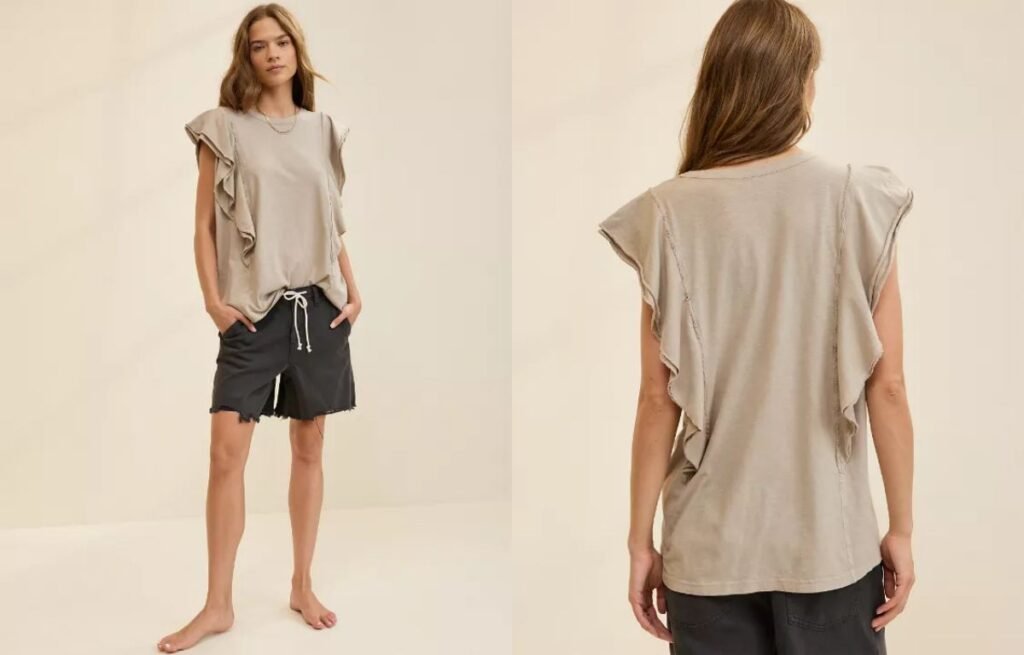
What Is a Ruffle Sleeve Top and What Makes It Unique?
Ruffle sleeve tops stand out for their romantic, feminine detailing and ability to create movement without needing bold prints or heavy embellishments. They often add volume to the shoulder or upper arm, drawing attention and balancing body proportions.
What makes ruffle sleeve tops unique is their ability to combine structural volume with visual softness—perfect for creating a feminine silhouette without revealing much skin.
Why Consumers Gravitate Toward Ruffles
- Emotionally appealing: Associated with softness, elegance, and nostalgia
- Body balancing: Great for pear-shaped bodies to balance upper and lower body
- Versatility: Can be adapted from casual wear to formal blouses
- Cultural relevance: Ruffles are part of many traditional styles across Asia, Latin America, and Europe
Ruffles may seem decorative, but they communicate femininity in non-verbal ways that resonate across cultures and generations.
What Are the Different Types of Ruffle Sleeves in Fashion Design?
Designers use various ruffle placements and constructions to achieve different silhouettes—from romantic and flowy to bold and structured.
Main ruffle sleeve types include cap ruffles, layered ruffles, flounce sleeves, bell ruffles, and spiral-cut ruffles. Each creates a different mood and silhouette.
Ruffle Sleeve Varieties
| Type | Description | Style Impact |
|---|---|---|
| Cap Ruffle Sleeve | Small ruffle at the shoulder | Soft and subtle |
| Layered Ruffle Sleeve | Multiple tiers stacked vertically | Adds drama and volume |
| Flounce Sleeve | Circular cut, sewn at hem or elbow | Elegant and fluid |
| Bell Sleeve with Ruffles | Flares with ruffled edge | Boho and vintage |
| Spiral-Cut Ruffle | Bias-cut spiral fabric | High fashion, asymmetrical effect |
Tip: Choose your ruffle type based on both the fabric weight and the body area where you want visual emphasis.
How Do Fabrics Affect the Look and Feel of Ruffle Sleeves?
Fabric choice is crucial in how a ruffle drapes, moves, and holds its shape. The same pattern in chiffon and in poplin will look and feel entirely different.
Lightweight, fluid fabrics like chiffon, georgette, or rayon create soft and fluttery ruffles, while crisp fabrics like poplin, organza, or taffeta create more structured, dramatic silhouettes.
Fabric Behavior with Ruffles
| Fabric Type | Effect on Ruffles | Best Use Case |
|---|---|---|
| Chiffon | Light, airy, floaty | Romantic tops, bridal |
| Cotton Poplin | Crisp and defined | Daywear or office blouses |
| Silk Satin | Fluid with elegant drape | Occasion wear |
| Organza | Sheer and stiff | High fashion or layered styles |
| Rayon/Viscose | Breathable with slight sheen | Casual chic or boho tops |
Use interfacing or double layers to stabilize ruffles on lighter fabrics when needed, especially in production runs.
How to Style Ruffle Sleeve Tops for Different Occasions?
Ruffle sleeves adapt easily across settings. It all depends on the sleeve scale, color, and what you pair the top with.
For casual looks, pair a single ruffle-sleeve top with denim. For workwear, go for structured cotton ruffle blouses. And for romantic or formal wear, choose multi-tiered ruffles in fluid fabrics.
Styling Matrix
| Occasion | Pairing Suggestions | Design Tip |
|---|---|---|
| Casual | High-rise jeans, espadrilles | Use small shoulder ruffles |
| Office/Formal | Trousers, loafers, blazer | Crisp poplin with sharp lines |
| Resort/Vacation | Flowy skirts, sandals, wide-brim hat | Flounce sleeve in cotton voile |
| Party or Dinner | Tailored pants, heels, statement earrings | Satin top with layered sleeve |
Avoid over-accessorizing with dramatic ruffles. Let the sleeve detail be the focal point of the outfit.
What Are the Design and Production Considerations for Ruffle Sleeves?
Designing ruffles is deceptively technical. They increase fabric consumption, require precision cutting (especially if spiral or bias-cut), and must be considered in the seam allowance and garment weight balance.
Ruffles require higher stitch density, often need hem finishing like babylock or rolled hem, and must be carefully aligned to ensure symmetry—especially in mass production.
Production Notes & Quality Checklist
Technical Considerations:
- Extra fabric usage: Ruffles require 1.5–2.5x the original length depending on fullness
- Stitching: Use 3-thread overlock for finishing light fabrics
- Symmetry checks: Ensure both sleeves have identical ruffle fullness and alignment
- Shrinkage: Pre-shrink fabric before cutting, especially for rayon or viscose
Quality Control Checklist:
| Parameter | Standard |
|---|---|
| Ruffle evenness | No puckering, same width left/right |
| Seam finishing | No raw edges, especially with sheer fabrics |
| Hem quality | Clean babylock or folded hem on ruffle edge |
| Attachment strength | Ruffles must be firmly secured with reinforced stitching |
In ODM work, clients often request 3D CAD mockups to visualize sleeve volume before sampling—especially for large-scale or asymmetrical ruffles.
Lantern Sleeve Top
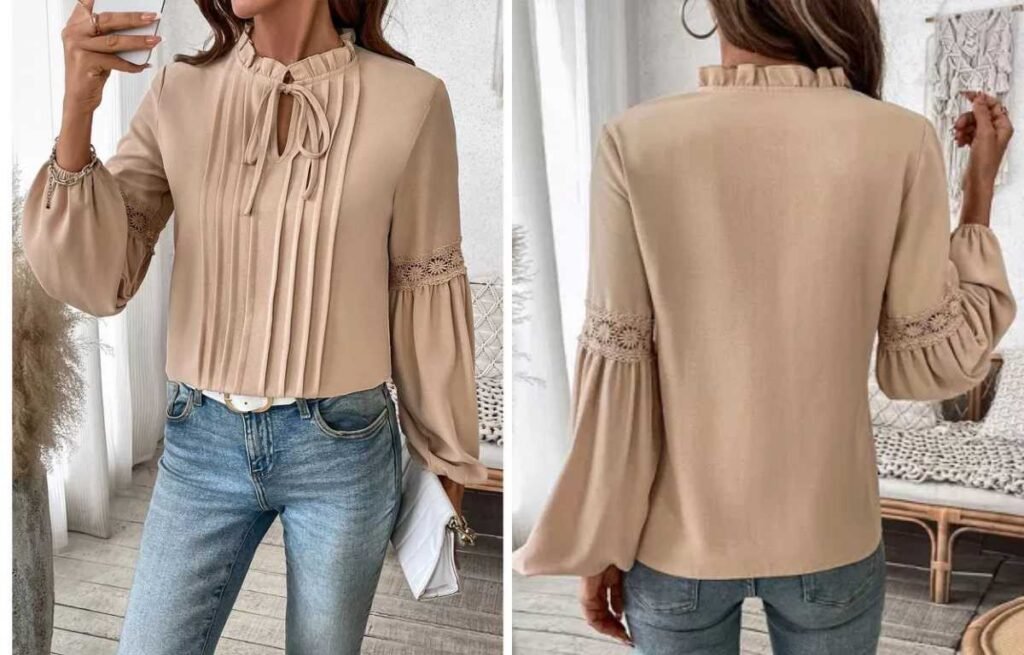
What Is a Lantern Sleeve and How Did It Evolve?
Lantern sleeves originated from historical European fashion (think 18th-century aristocratic wear), and later evolved through the Victorian era into modern interpretations across runway and ready-to-wear.
The lantern sleeve is defined by its fullness between the shoulder and cuff—creating a rounded silhouette that is cinched at both ends. It’s different from a balloon or bishop sleeve due to its dramatic shape and construction.
Fashion History Meets Contemporary Wear
- Renaissance & Baroque eras: Lantern sleeves symbolized luxury
- Victorian influence: Modified into puffed sleeves for women’s blouses
- 1980s revival: Shoulder emphasis returned in power dressing
- 2020s trend: Lantern sleeves reborn in minimal, avant-garde, and romantic styling
Designers like Simone Rocha, Alexander McQueen, and Cecilie Bahnsen have used lantern sleeves as a canvas for expression—sometimes delicate, sometimes architectural.
What Types of Lantern Sleeves Exist in Fashion Design?
Lantern sleeves are incredibly adaptable. Depending on fullness, fabric, and cut, they can range from softly elegant to sharply avant-garde.
The main types include single-volume lantern sleeves, double-puff lantern sleeves, pleated lantern sleeves, and cuffed lantern sleeves. Each type brings its own structural drama.
Sleeve Shape Variations
| Type | Description | Best Use Case |
|---|---|---|
| Classic Lantern Sleeve | Wide middle, gathered at shoulder and cuff | Vintage-inspired blouses |
| Double-Puff Lantern | Two gathered sections, stacked volume | High fashion or dramatic looks |
| Pleated Lantern Sleeve | Constructed with pleated fullness instead of gathers | More structured, sleek styles |
| Elastic-Cuff Lantern | Uses elastic at wrist for casual control | Boho or contemporary streetwear |
| Layered Lantern | Two layers of lightweight fabric for added volume | Resortwear or statement pieces |
Design tip: Sleeve volume must always be balanced by the body silhouette—use darts, waist shaping, or peplum cuts to maintain overall proportion.
Which Fabrics Work Best for Structuring Lantern Sleeves?
Lantern sleeves need fabric that can hold shape without collapsing, especially when fullness is gathered or pleated.
Best fabrics include crisp cotton poplin, organza, taffeta, linen blends, or medium-weight rayon twill. Avoid clingy knits or soft jerseys unless they are backed or stabilized.
Fabric Behavior in Lantern Shapes
| Fabric | Behavior | Design Intent |
|---|---|---|
| Cotton Poplin | Crisp and structured | Daywear and office tops |
| Organza | Sheer but stiff | Ethereal evening looks |
| Linen Blend | Breathable with body | Natural, boho styling |
| Taffeta | High-shine and sculptural | Party or dramatic fashion |
| Rayon Twill | Drapey but has weight | Balanced casual-formal tops |
Note: Pre-washing is critical for natural fibers like linen or cotton to prevent post-sewing shrinkage that can ruin sleeve symmetry.
How to Style Lantern Sleeve Tops for Different Fashion Audiences?
Lantern sleeves cater to various demographics—from bold fashion lovers to soft minimalists.
To style lantern sleeve tops, balance the sleeve volume with slim bottoms or tucked-in waistlines. Use clean accessories or layer under structured blazers for dimension.
Styling Matrix by Customer Type
| Audience | Styling Tips | Sleeve Type |
|---|---|---|
| Minimalist Chic | White lantern sleeve shirt + tailored trousers | Pleated or low-volume lantern |
| Romantic/Vintage | Lace lantern blouse + midi skirt | Double-puff or layered lantern |
| Streetwear Gen Z | Crop lantern top + wide jeans | Elastic-cuffed organza sleeves |
| Occasionwear | Taffeta lantern sleeve + matching skirt set | Dramatic sleeve with clean base |
Styling tip: Tuck into high-rise pants or skirts to let the sleeve silhouette breathe without overwhelming the body line.
Bell Sleeve Top
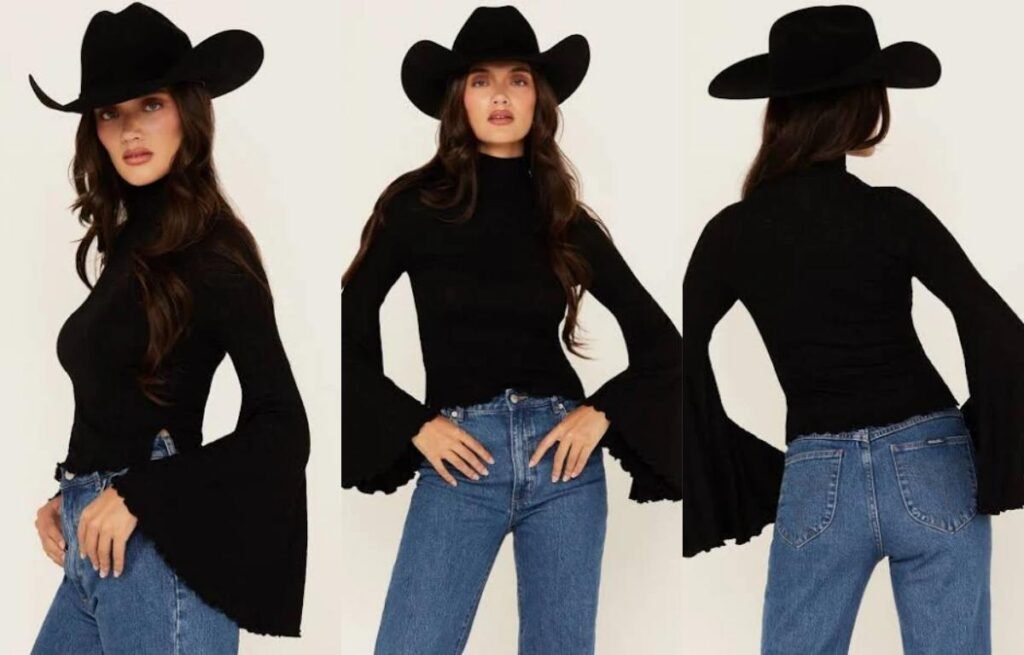
What Defines a Bell Sleeve and How Is It Different from Other Flared Sleeves?
A bell sleeve typically starts narrow at the armhole or elbow and flares out evenly into a wide, rounded hem—like the shape of a bell. This silhouette is graceful and fluid, offering more elegance than casual flare or puff sleeves.
Bell sleeves are distinguished by their symmetrical, wide flare—offering structured elegance or bohemian ease depending on fabric and cut.
Bell Sleeves vs. Other Types
| Sleeve Style | Key Features | Feel |
|---|---|---|
| Bell Sleeve | Flared from shoulder or elbow, smooth finish | Soft, flowing, romantic |
| Flounce Sleeve | Circular cut, attached as an extra layer | More volume and bounce |
| Trumpet Sleeve | Narrower flare starting mid-forearm | Sleek, dramatic |
| Bishop Sleeve | Gathers into a cuff | Billowy, vintage |
| Lantern Sleeve | Volume both at top and bottom | Sculptural, bold |
While bell sleeves are often linked to 70s fashion, designers today use cleaner cuts and luxe fabrics to modernize the silhouette.
What Are the Different Variations of Bell Sleeves in Modern Design?
Modern interpretations of bell sleeves go beyond just the classic flare. Designers play with flare placement, sleeve length, and layering to suit different markets.
Popular variations include short bell sleeves, split bell sleeves, layered bell sleeves, and asymmetrical bell sleeves. Each has its own aesthetic and target audience.
Variants That Appeal to Diverse Markets
| Sleeve Type | Description | Best Use |
|---|---|---|
| Short Bell Sleeve | Flared from shoulder, cropped at bicep | Summer tops, lightweight blouses |
| Elbow Bell Sleeve | Fitted to elbow, flares out mid-arm | Officewear, elegant blouses |
| Split Bell Sleeve | Slit open at seam, adds movement | Partywear or statement tops |
| Double-Layer Bell Sleeve | Two tiers of flare | Romantic or formal styling |
| Asymmetrical Bell Sleeve | Uneven hem or angular flare | High fashion or editorial pieces |
Use layered flares or lace trims to increase visual depth while maintaining breathability—especially for summer collections.
Which Fabrics Work Best for Bell Sleeves and Why?
The success of a bell sleeve design depends on how the fabric behaves when draped or flared. Choosing the right material is essential to achieving the intended movement.
Best fabrics for bell sleeves include chiffon, crepe, viscose blends, lightweight cotton, and soft linen. These fabrics provide the right combination of drape and structure.
Fabric Performance Insights
| Fabric | Behavior | Suitability |
|---|---|---|
| Chiffon | Lightweight, fluid | Ethereal, layered looks |
| Crepe | Slightly textured, drapey | Semi-formal and elegant styles |
| Rayon/Viscose | Breathable, silky drape | Everyday wearable bell sleeves |
| Linen Blends | Crisp with flow | Natural, summery designs |
| Cotton Lawn | Lightweight, structured | Officewear or spring tops |
For layered or voluminous flares, avoid heavy or clingy fabrics—opt for sheers or blends with movement and breathability.
How to Style Bell Sleeve Tops for Different Markets or Lifestyles?
Bell sleeve tops adapt well across fashion categories, from office attire to resortwear. Styling depends heavily on silhouette proportion and target age group.
Pair bell sleeve tops with fitted bottoms—like slim pants, pencil skirts, or high-waisted jeans—to balance volume and elongate the frame.
Styling Strategy by Segment
| Market | Styling Tips | Design Focus |
|---|---|---|
| Young Urban (18–30) | Crop bell sleeve tops + denim or mini skirts | Use soft rayon or modal blends |
| Professional Women (25–40) | Elbow-length bell sleeve + tailored pants | Neutral tones, cotton-crepe fabric |
| Boho Resortwear | Maxi bell sleeve tunics + wide-brim hats | Sheer chiffon, embroidery trims |
| Eveningwear | Satin bell sleeves + midi pencil skirts | Silk blends, jewel tones, split sleeve effect |
Remember: a well-designed bell sleeve can instantly make a basic silhouette feel elevated and editorial.
What Are the Key Production Challenges of Bell Sleeve Designs?
Bell sleeves may look simple, but they introduce several production complexities, especially with volume control and fabric stability.
The main challenges include hem finishing (especially on curved seams), sleeve symmetry, fabric handling during flare construction, and QC on volume distribution.
Production and QA Checklist
Production Tips
- Flare calculation: Use flare ratio of 1.5x–2.2x depending on desired volume
- Hem finishing: Rolled hem or babylock for sheers; bias binding for opaque fabrics
- Sleeve support: Add stay tape or interfacing at armholes if flare is heavy
- Patterning: Use circular or half-circle sleeve block for clean curves
QC Checklist
| Area | Standard |
|---|---|
| Sleeve symmetry | Must be visually identical left/right |
| Hemline consistency | Smooth, no puckers or twisting |
| Flare control | No seam warping at attachment point |
| Fabric shrinkage | Controlled within ±3% tolerance |
Note: Split bell sleeves require edge stabilization and may need bartack stitching at the split start to prevent tearing over time.
Batwing Sleeve Top
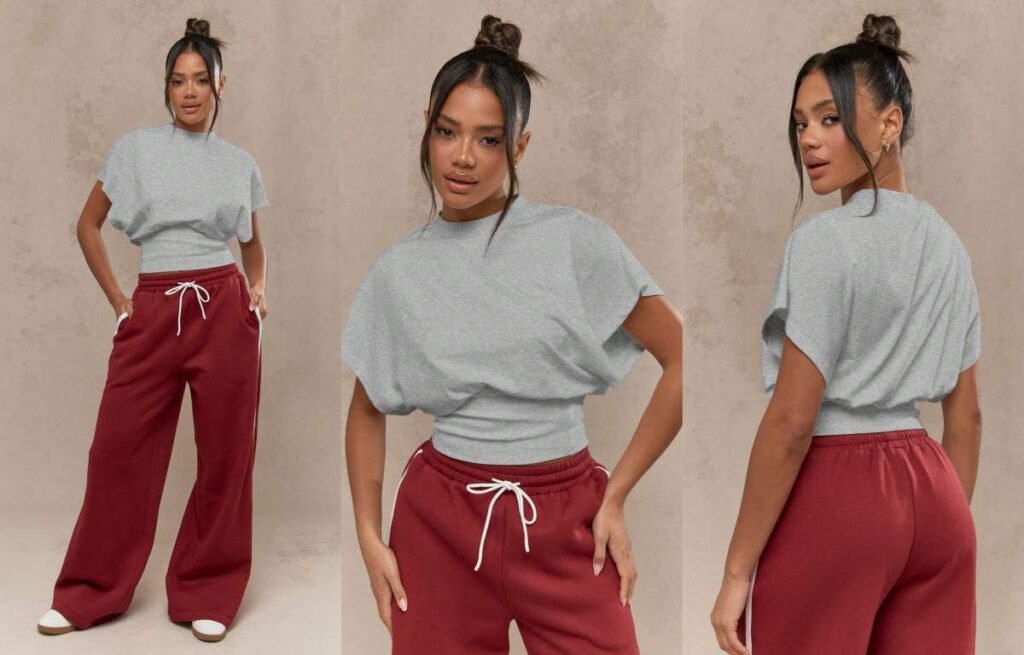
What Is a Batwing Sleeve and How Is It Constructed?
The batwing sleeve is a hybrid of sleeve and bodice—rather than being attached via an armhole, it’s an extension of the top body piece. The armhole starts low (often at the waist), while the sleeve narrows at the wrist.
Batwing sleeves are built into the body of the garment and taper from a wide underarm to a fitted wrist, giving a relaxed yet tailored drape.
Pattern and Shape Details
- Armhole depth: Begins very low, usually near waist or ribcage
- Sleeve cut: Often one-piece with front/back bodice
- Silhouette: Wide upper body, fitted bottom hem or sleeve cuff
- Versatility: Works well for oversized, drapey, or layered silhouettes
The batwing top gives ease and movement without looking sloppy, making it perfect for modern silhouettes that prioritize comfort and fluidity.
How Is the Batwing Sleeve Different from Dolman or Kimono Sleeves?
Many buyers and designers confuse these three types. Understanding the differences is critical when working with OEM/ODM clients who request specific cuts.
Batwing sleeves are extreme versions of dolman sleeves, with much deeper armholes. Kimono sleeves are straight and often part of traditional Eastern garments.
Sleeve Style Comparison Table
| Sleeve Type | Construction | Shape | Origin |
|---|---|---|---|
| Batwing | Sleeve + body in one cut | Winged, tapering to wrist | Western, 1940s fashion |
| Dolman | Less exaggerated version of batwing | Slight drop, relaxed fit | Derived from Turkish coats |
| Kimono | Straight and wide sleeve, no armhole curve | Rectangular | Traditional Japanese garments |
Designers aiming for ease of movement and oversized silhouettes often choose batwing sleeves over dolman for bolder expression.
What Fabrics Work Best for Batwing Sleeve Tops?
Because batwing tops emphasize drape and fluidity, the fabric must flow well while retaining shape in the cuffs or hem. Fabric choice heavily impacts the final fit and visual weight.
The best fabrics are medium-weight, drapey knits or wovens—like modal, rayon jersey, viscose crepe, sweater knits, and bamboo blends.
Fabric Performance Breakdown
| Fabric Type | Behavior | Recommended Use |
|---|---|---|
| Rayon Jersey | Soft, fluid, great recovery | Casual, everyday tops |
| Viscose Crepe | Drape with light texture | Elevated or semi-formal wear |
| Modal Knit | Luxuriously soft, sustainable | Lounge or premium basics |
| Sweater Knit | Cozy with structure | Fall/Winter collections |
| Bamboo Blend | Eco-friendly, breathable | Yoga, athleisure batwing tops |
If the batwing extends very far, ribbed cuffs or structured hems help prevent the top from overwhelming the wearer’s frame.
How to Style Batwing Tops for Different Occasions?
Despite their bold cut, batwing tops are surprisingly easy to style. The key is balancing their width with more fitted bottoms and clean accessories.
For casual looks, pair batwing tops with leggings or tapered pants. For workwear, tuck a batwing blouse into a midi skirt. For streetwear, go oversized and pair with chunky sneakers or boots.
Styling Matrix
| Style Goal | Outfit Tip | Target Fabric |
|---|---|---|
| Comfort-Luxe | Modal batwing + soft joggers | Modal knit |
| Creative Officewear | Viscose batwing blouse + midi skirt | Viscose crepe |
| Weekend Streetwear | Oversized batwing tee + cycling shorts | Cotton jersey |
| Fall Layering | Knit batwing sweater + skinny jeans | Sweater knit |
Styling tip: Avoid pairing batwing tops with wide-leg pants unless you cinch the waist or opt for cropped cuts. Proportion is everything.
What Are the Design and Production Considerations for Batwing Sleeves?
Because of their non-traditional shape, batwing sleeves need special attention during patternmaking, cutting, and sewing.
The key challenges include fabric distortion during cutting, excess fabric usage, controlling sleeve tapering, and ensuring proper drape without bulk at the side seams.
Technical Notes for Production
Pattern Notes:
- Single bodice-sleeve draft: Requires larger marker and more fabric
- Sleeve tapering: Must match wrist circumference accurately
- Side seam positioning: Critical to manage drape and garment weight
QA & Finishing Checklist:
| Item | Quality Standard |
|---|---|
| Hemline evenness | No dragging or uneven droop at sides |
| Sleeve alignment | Both sides must taper symmetrically |
| Seam flatness | No warping near underarm junction |
| Cuff elasticity | Secure and soft if ribbed cuffs used |
In ODM manufacturing, provide 3D fit simulations or first-fit samples to help overseas buyers visualize the unusual sleeve drop before approving mass production.
Raglan Sleeve Top
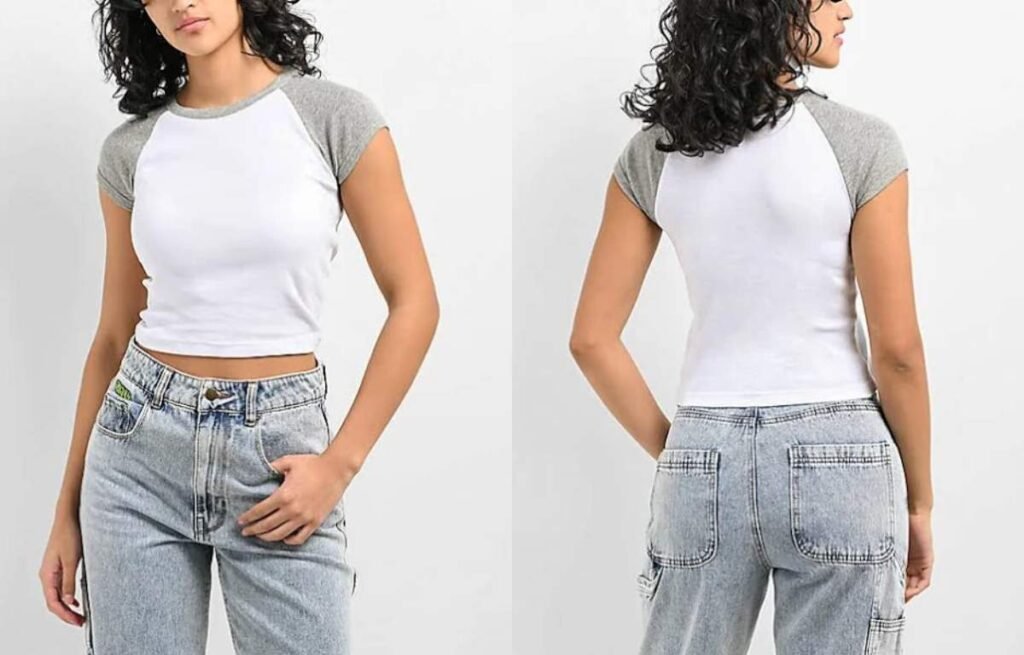
What Is a Raglan Sleeve and How Is It Constructed?
A raglan sleeve differs from set-in sleeves by how it joins the bodice. Instead of forming a curved seam at the shoulder, it runs diagonally from the underarm to the neckline, usually forming a “Y” shape with the collar seam.
Raglan sleeves are constructed as a single panel extending from neckline to underarm, giving a smoother shoulder line, a sportier look, and more arm movement.
Pattern Breakdown and Fit Benefits
- Diagonal seams enhance shoulder stretch without appearing bulky
- No shoulder seam allows clean drape over rounded shoulders
- Easier grading across multiple sizes due to seamline flexibility
- Unisex appeal makes it ideal for casual, gender-neutral, or sporty cuts
The raglan’s origin comes from British military coats, designed for ease of sword movement. Today, it’s synonymous with sportiness and functional minimalism.
Why Is the Raglan Sleeve Favored in Activewear and Streetwear?
Many high-movement garments like baseball tees, sweatshirts, and gym tops use raglan construction. But streetwear brands also love it for its aesthetic potential—especially for color-blocked designs.
Raglan sleeves provide superior freedom of movement and support graphic placements across sleeves and shoulders, making them ideal for performance and statement streetwear.
Application by Category
| Category | Function of Raglan Sleeve |
|---|---|
| Activewear | Enhances shoulder rotation and ventilation |
| Loungewear | Offers relaxed, roomy shoulder fit |
| Streetwear | Enables high-contrast blocking, prints across seams |
| Unisex Basics | Universally flattering cut for various body types |
Even in minimalist brands, raglan tops allow seamless integration of stretch panels, mesh, or contrast trims along the sleeve seam.
What Fabric and Color Combinations Suit Raglan Sleeve Tops Best?
Because the raglan cut visually separates the sleeve from the body, it’s a natural choice for mixed fabrics or color-blocking. But it also works beautifully in monotone rib knits or garment-dyed cottons.
Use soft, mid-weight knits for casualwear; performance mesh or moisture-wicking blends for activewear; and contrast fabrics (like faux leather or lace) for high-style raglans.
Fabric & Visual Pairing Strategy
| Fabric Pairing | Best For | Description |
|---|---|---|
| Cotton body + jersey sleeve | Everyday tees | Natural stretch in sleeves only |
| Mesh sleeve + spandex body | Activewear | Enhances breathability during workouts |
| Ribbed knit + contrast cuffs | Streetwear | Textural dimension |
| Tencel jersey all-over | Elevated basics | Fluid drape with breathability |
| Faux leather sleeve + cotton body | Hybrid fashion | Edgy look with comfort underneath |
Raglan seams are also great for adding piping, flatlock stitches, or visible overlock finishes to emphasize the sporty appeal.
How to Style Raglan Tops for Different Fashion Markets?
The raglan sleeve bridges sportswear and lifestyle fashion. It can be styled down for athleisure or elevated for smart-casual wear.
For casual, pair with joggers or denim. For upscale styling, match fitted raglan tops with midi skirts or tailored trousers. Crop versions fit well into Gen Z aesthetics.
Style Strategies by Segment
| Market Segment | Styling Idea | Fabric Notes |
|---|---|---|
| Athleisure Gen Z | Oversized raglan tee + biker shorts | Lightweight jersey or mesh |
| Smart Casual (25–40) | Slim raglan knit + culottes | Tencel or ribbed rayon blend |
| Streetwear Enthusiast | Color-block raglan hoodie + cargo pants | Brushed fleece |
| Women’s Workwear | Raglan blouse + high-rise skirt | Modal or stretch poplin |
Raglan sleeves make upper body movement look natural—great for styling video campaigns or editorials that show fluid motion.
What Are the Production and Patternmaking Considerations for Raglan Sleeves?
From a production perspective, raglan sleeves offer some efficiencies but also require specific seam management and alignment.
Challenges include seam puckering on curves, stripe mismatching, and collar tension at the neckline seam junction.
Technical Considerations
Patterning:
- Diagonal seam control requires slight easing to avoid drag lines
- Neckline integration must factor in shoulder slope and body width
- Stripe or plaid prints need careful seam matching
Sewing & QC Tips:
| Area | QC Standard |
|---|---|
| Shoulder angle | Symmetrical Y-junction at neckline |
| Seam strength | Reinforce underarm to resist stretching |
| Pucker control | Stabilize seams for lightweight knits |
| Print alignment | Check graphics or stripes match sleeve/body seam |
Raglan sleeves can be a cost-saver in high-volume runs by reducing sleeve cap easing—but only if neck seam handling is controlled early in prototyping.
Cape Sleeve Top
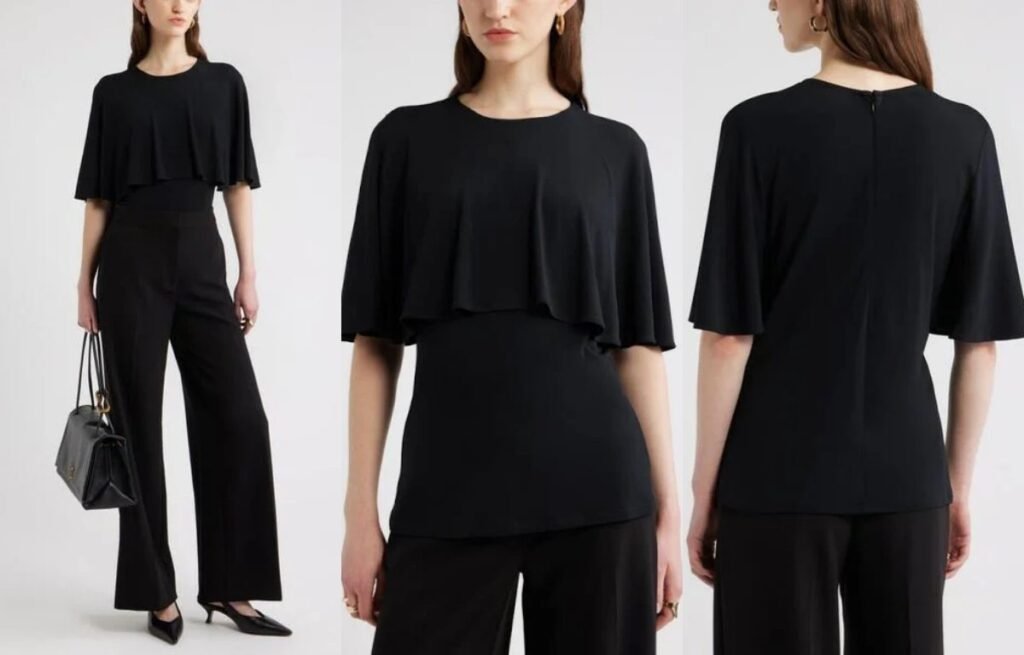
What Defines a Cape Sleeve and How Is It Built?
Cape sleeves are distinct from flared or flutter sleeves. They aren’t stitched under the arm, and they often flow freely from the neckline or shoulder seam.
A cape sleeve is a loose extension of fabric that falls from the shoulder or neckline to create a soft cape effect on the arm. It is cut for ease of movement rather than constriction.
Cape Sleeve Variations
| Cape Sleeve Type | Description | Visual Effect |
|---|---|---|
| Shoulder-Attached | Seam at shoulder, drapes mid-arm | Balanced and elegant |
| Slit Cape Sleeve | Open down the outer arm | More dramatic and flowing |
| Mini Cape Sleeve | Short length, flares just at the shoulder | Subtle, feminine accent |
| Extended Cape | Reaches elbow or longer, even to wrist | Strong, formal presence |
The sleeve moves independently from the arm, offering a sense of freedom and fluid motion.
Where Does the Cape Sleeve Fit in Fashion Categories?
This sleeve shape is favored across multiple categories — from modern minimalism to ethereal bridalwear.
Cape sleeves are often used in formal blouses, eveningwear, minimalist tops, bridal looks, and bohemian designs. Their adaptability allows them to work in both editorial and commercial collections.
Fashion Category Fit
| Segment | Typical Use of Cape Sleeve | Common Fabrics |
|---|---|---|
| Occasionwear | Long silk chiffon or satin overlay | Silk chiffon, satin |
| Resortwear | Embroidered short cape tops | Voile, cotton gauze |
| Minimalist Workwear | Short crepe cape sleeves | Matte crepe, georgette |
| Evening/Editorial | Architectural or full-length cape | Scuba knit, bonded jersey |
Designers love cape sleeves because they offer volume without bulk. They create space and elegance with very little fabric weight.
What Fabrics Make Cape Sleeve Tops Successful?
The fabric choice determines how the cape falls — too heavy, and it stiffens; too light, and it may collapse or cling.
Lightweight, drapey fabrics like chiffon, silk crepe, satin, and voile are ideal. For more structured silhouettes, bonded knits and scuba jersey are excellent.
Fabric Behavior for Cape Sleeves
| Fabric | Best Used For | Visual Texture |
|---|---|---|
| Chiffon | Flowy tops and dresses | Sheer and airy |
| Silk Satin | Elegant eventwear | Glossy and luxe |
| Georgette | Formal blouses | Textured drape |
| Voile/Cotton | Summer casual wear | Matte and breathable |
| Bonded Jersey | Editorial or fashion-forward | Crisp and sculptural |
Hem finishing is critical. Use a baby hem, rolled edge, or clean binding to avoid distracting flares or curling.
How Do You Style Cape Sleeve Tops Across Occasions?
The cape sleeve makes a big visual impact, so the rest of the outfit should be sleek and balanced.
Pair with slim-fit pants, high-rise trousers, or A-line skirts. Avoid bulky bottoms. Add minimalist accessories to keep focus on the sleeves.
Styling Options by Occasion
| Occasion | Styling Suggestion | Fabric Example |
|---|---|---|
| Office Minimalism | White cape blouse + tailored slacks | Matte crepe |
| Cocktail Event | Long cape-sleeve satin top + midi skirt | Silk or satin |
| Brunch Casual | Short cape-sleeve cotton top + denim skirt | Voile or gauze |
| Red Carpet | Cape sleeve bodysuit + statement trousers | Bonded scuba |
Cape sleeves look stunning in motion — ideal for content creators and video-based campaigns.
What Are the Technical and Manufacturing Considerations?
While visually simple, cape sleeves require careful construction to avoid warping, sagging, or uneven drape.
The key technical challenges include shoulder seam support, symmetrical draping, and clean edge finishes.
Production Checklist
| Component | Key Consideration |
|---|---|
| Shoulder Seam | Must be reinforced to hold fabric weight |
| Cape Panel Cut | Grainline aligned for consistent drape |
| Hem Finishing | Narrow hem or serged edge recommended |
| Symmetry | Left/right cape must be matched precisely |
Always conduct a movement test in fittings — a poorly balanced cape sleeve can twist or slide with arm movement.
Tie Sleeve Top
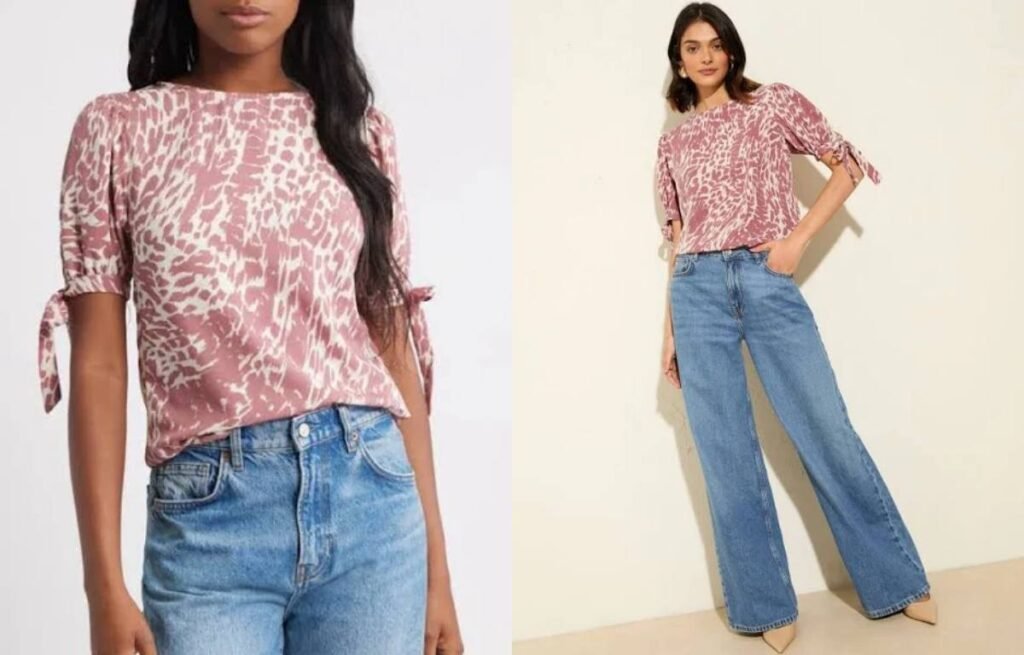
How Is a Tie Sleeve Constructed and What Is Its Purpose?
Tie sleeves are typically created by adding fabric extensions at the sleeve hem or inserting slits that can be pulled together and secured. They serve both decorative and functional roles—offering adjustability, shape, or contrast.
Tie sleeves consist of an extended strip of fabric or cord that allows the wearer to tie a knot, bow, or cinch the cuff, adding movement and personalization to the garment.
Construction Methods and Variants
| Tie Sleeve Type | Description | Design Effect |
|---|---|---|
| Hem Tie | Ties attached at sleeve hem | Flared or cinched ends |
| Slit Tie | Slit sleeve held together with a tie | Asymmetry + movement |
| Bow Tie Sleeve | Decorative bows near elbow or wrist | Feminine, romantic vibe |
| Wrap Tie Sleeve | Fabric wraps around arm, tied at cuff | Adjustable volume |
Tie sleeves are common in blouses, tunics, casual dresses, and relaxed resortwear—anywhere detail and personality matter.
Where Does the Tie Sleeve Trend Fit in the Fashion Landscape?
This detail reflects a broader consumer desire for tactile, interactive clothing. It’s both fashion-forward and emotionally engaging.
Tie sleeves are especially popular in contemporary casualwear, romantic tops, and editorial resort collections. Their playful appeal bridges the gap between everyday and elevated style.
Market Segmentation and Brand Usage
| Segment | Common Application | Positioning Notes |
|---|---|---|
| Boho & Resortwear | Loose cotton tops with side tie slits | Effortless and breezy |
| Romantic Wear | Puff sleeves with wrist ties | Ultra-feminine |
| Casual Basics | Jersey tees with knotted sleeves | Youthful, easy to wear |
| Designer RTW | Oversized poplin with asymmetric ties | Bold, directional accents |
Labels like Ulla Johnson, Zimmermann, and Self-Portrait use tie sleeves to create a strong identity while keeping silhouettes soft.
What Fabrics Work Best for Tie Sleeve Designs?
The fabric must be flexible enough to tie smoothly, yet strong enough not to fray or deform over time.
Lightweight woven or knit fabrics with moderate drape—like poplin, voile, rayon, linen blends, and jersey—are best suited for tie sleeves.
Fabric Performance for Tie Details
| Fabric | Tie Behavior | Best For |
|---|---|---|
| Poplin | Structured, clean bow | Office tops, directional styles |
| Rayon | Soft, fluid tie | Casual boho or romantic looks |
| Cotton Voile | Airy, easy to knot | Resortwear and summer capsules |
| Linen Blends | Textured, holds shape | Natural or earthy aesthetics |
| Jersey | Stretchy, laid-back knots | T-shirt inspired streetwear |
Avoid fabrics that are too thick or stiff—they’ll create bulky, awkward-looking ties that lose appeal after washing.
How Can Tie Sleeve Tops Be Styled Effectively?
They work well in transitional seasons and bring dynamic movement to otherwise plain silhouettes.
To style a tie sleeve top, keep the rest of the look structured—pair with high-waist trousers, tailored skirts, or slim jeans. The sleeve should be the focal point.
Styling Scenarios
| Occasion | Styling Suggestion | Fabric Type |
|---|---|---|
| Weekend Casual | Tie sleeve tee + distressed denim | Cotton jersey |
| Date Night | Silk wrap tie blouse + slip skirt | Satin or silk |
| Office Chic | Poplin shirt with cuff ties + trousers | Stretch poplin |
| Brunch/Resort | Linen tie sleeve tunic + sandals | Linen blend |
Avoid layering with tight cardigans or structured jackets—it ruins the drape and function of the sleeve.
Chain Strap Top
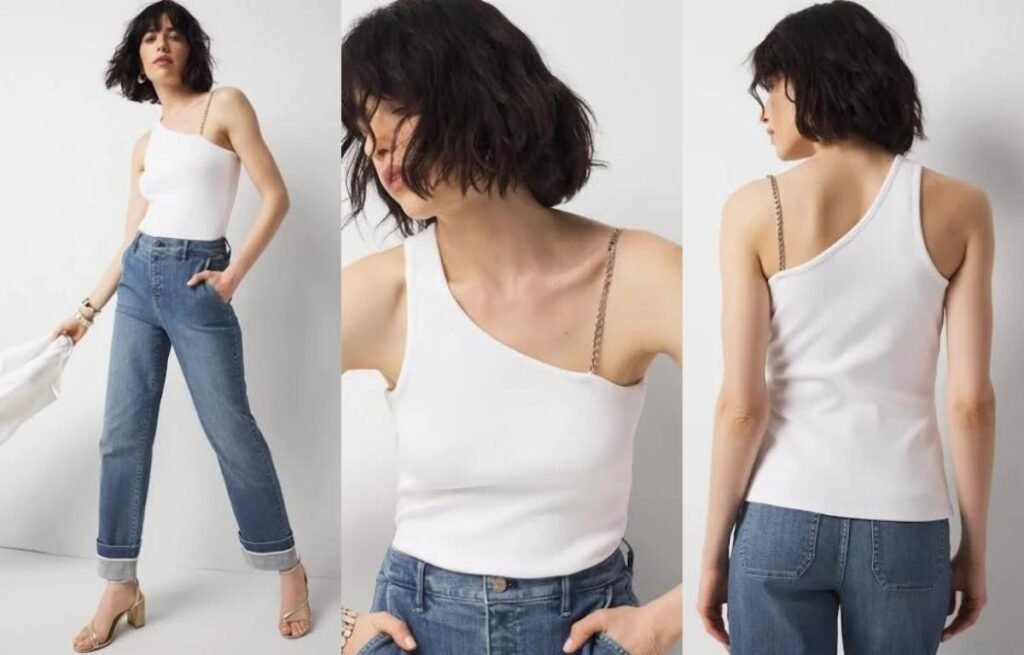
What Defines a Chain Strap Top and How Is It Constructed?
Unlike traditional straps made from fabric or elastic, chain straps are rigid and ornamental. They can be permanently sewn into seams or detachable using hardware.
A chain strap top replaces conventional fabric straps with decorative chains—often gold, silver, or acrylic—providing both structural support and visual impact.
Chain Types and Attachment Methods
| Chain Type | Visual Impact | Weight | Usage Notes |
|---|---|---|---|
| Metal (Gold) | Luxe, polished, bold | Medium | Popular in eveningwear |
| Silver-tone | Sleek, modern, minimal | Light | Blends well with monochrome fabrics |
| Acrylic Chain | Trendy, chunky, colorful | Light | Seen in street or Y2K-inspired lines |
| Rhinestone | Sparkling, high-glam | Medium | For partywear and red carpet looks |
Attachment can be via:
- D-rings or grommets for mobility
- Sewn-in tabs for fixed structure
- Clasp hooks for convertible looks
Chain positioning must account for weight distribution and movement. Poor placement causes slipping or discomfort.
Why Are Chain Straps Trending in Ready-to-Wear Collections?
Chains tap into consumer desires for hybrid aesthetics—tough and soft, bold and minimalist, utilitarian and sexy.
Chain strap tops offer visual drama with minimal effort. They appeal to fashion-forward consumers looking for standout elements in otherwise simple garments.
Market Insights and Trend Drivers
- Celebrity Influence: Chain strap dresses on red carpets normalize them in high fashion.
- Y2K Revival: Early-2000s metallic and clubwear resurgence boosted demand.
- TikTok/IG Styling: The shimmer of metal against skin photographs beautifully in video and reels.
- Festivalwear Crossovers: Seen in Coachella-inspired collections and music merchandise.
Brands like Cult Gaia, House of CB, and Zara have all embraced chain details to elevate basic silhouettes into viral products.
What Fabrics and Necklines Pair Best with Chain Straps?
Since the strap becomes the visual focal point, designers pair it with clean, skin-baring fabrics and sculpted necklines.
Lightweight drapey fabrics—such as satin, crepe, mesh, and jersey—pair best with chain straps, especially in cowl, scoop, or square necklines.
Pairing for Impact
| Fabric | Best Neckline Pairings | Reason for Use |
|---|---|---|
| Satin/Charmeuse | Cowl, asymmetrical | Allows chain to drape into décolletage |
| Crepe | Square, straight | Keeps clean architectural look |
| Mesh or Sheer Net | Halter with chain back detail | Ideal for layering or reveal |
| Cotton Rib Jersey | Racerback + chain loop | Adds contrast in casualwear |
Avoid pairing chain straps with very thick or stiff fabrics—they distort drape and pull the garment out of alignment.
Layered Look Top
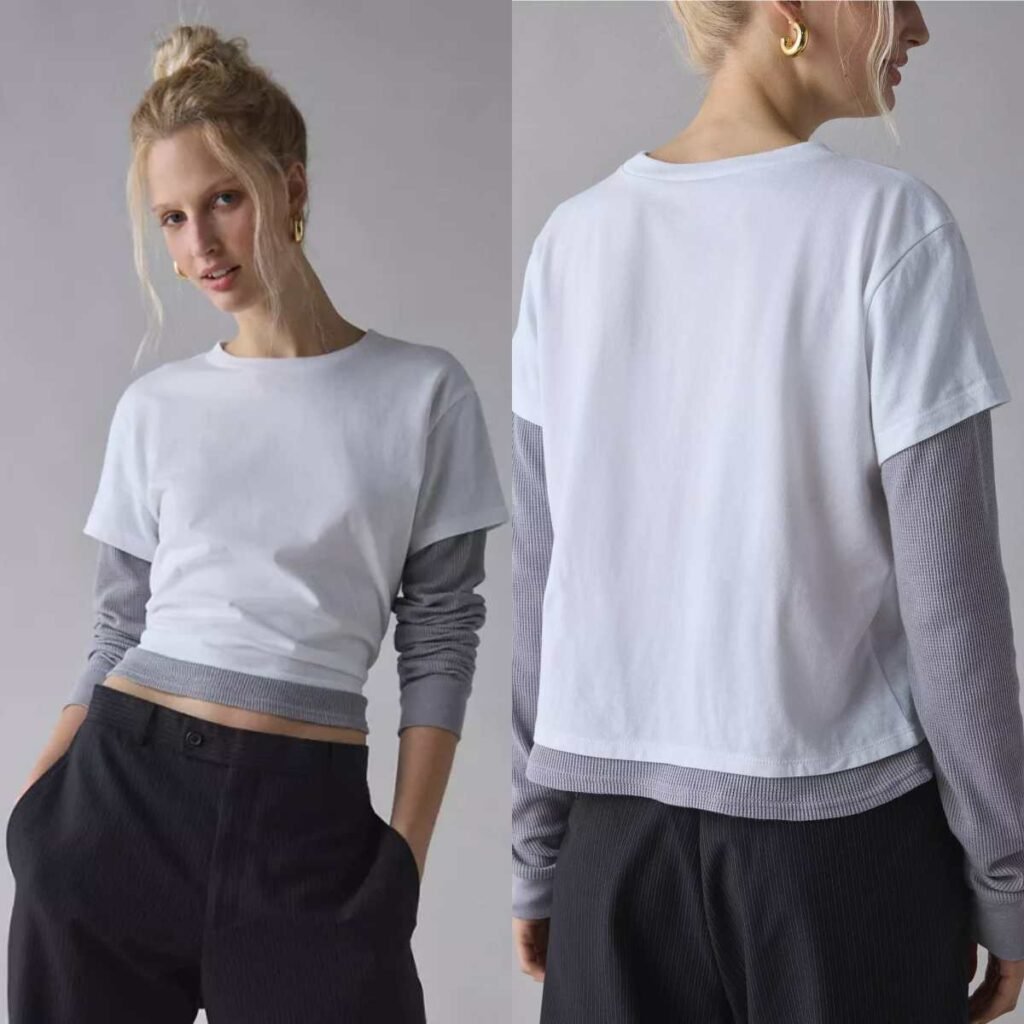
What Exactly Is a Layered Look Top and How Is It Constructed?
These tops mimic a layered outfit using strategic patterning, dual-fabric panels, or trompe-l’œil effects—often with faux collars, double hems, or fabric inserts.
A layered look top is a single garment designed to visually imitate two or more pieces layered together, constructed using mixed panels, contrast fabrics, or built-in linings and necklines.
Design and Sewing Techniques
| Construction Method | Description | Visual Effect |
|---|---|---|
| Inset Paneling | A “false” underlayer inserted at the neckline or hem | Looks like tee + cami or shirt + vest |
| Double Hem/Double Collar | Two distinct fabric bands stitched into one silhouette | Simulates shirt under sweatshirt |
| Contrasting Sleeves | Different sleeve body/fabric in same top | Imitates long sleeve under tee |
| Layered Bodice/Overlay | Cropped vest or overlay panel stitched onto bodice | 3D layering without bulk |
The magic lies in subtle construction: seams, darts, and fabric transitions must feel seamless even when the garment looks complex.
Why Do Consumers Prefer Pre-layered Tops Over Real Layering?
Layering can be bulky, hard to style, and seasonally impractical. These tops solve all three problems at once.
Layered look tops simplify styling, reduce garment weight, and eliminate bulk—making them ideal for transitional weather, small wardrobes, or fast-paced lifestyles.
Consumer Behavior Insights
- Capsule wardrobe fans love visual variety with fewer pieces.
- Travelers appreciate less weight and more versatility.
- Minimalists want pre-styled looks with zero effort.
- Body-conscious shoppers avoid bunching at waist, neck, or underarms.
Retailers report fewer returns for layered look tops vs. two separate layers—fit is more consistent, and visuals are easier to market.
What Are the Most Common Styles of Layered Look Tops?
Designers across categories have embraced the layered illusion—from streetwear to contemporary minimalism to Korean fashion.
Popular styles include tee-under-slip, vest-over-shirt, double-sleeve designs, and hybrid hoodie-blouse combinations.
Commercial Formats
| Layer Illusion Type | Example Top | Trend Relevance |
|---|---|---|
| Tee + Slip Combo | Jersey tee bodice + satin straps | Y2K, Gen-Z trend |
| Shirt + Sweater Combo | Poplin collar insert in knitwear | Preppy, normcore |
| Vest + Blouse Combo | Faux knitted vest on chiffon base | Korean/Asian casual |
| Double Layer Tee | Long-sleeve sleeve under short tee | Skate/streetwear fusion |
Asian brands like Stylenanda and Uniqlo have mastered these silhouettes by blending practical cuts with Gen Z appeal.
Which Fabrics and Silhouettes Work Best for Layered Designs?
Balance is key: outer “layer” must be stable and hold structure, while the under “layer” must be thin and comfortable.
Lightweight knits, woven blends, cotton jersey, chiffon, and satin are frequently used in combinations to create believable but wearable layers.
Fabric & Fit Table
| Layer Position | Recommended Fabric | Fit Tip |
|---|---|---|
| “Under” Layer | Cotton jersey, chiffon | Use thin fabric to avoid bulk |
| “Over” Layer | French terry, crepe, rib | Needs to hold silhouette sharply |
| Full Body | Single knit + rib inset | Seamless integration, easy to sew |
Avoid combining high-shrinkage and low-shrinkage fabrics—they may deform after washing or cause puckering at seams.
Double Layer Top
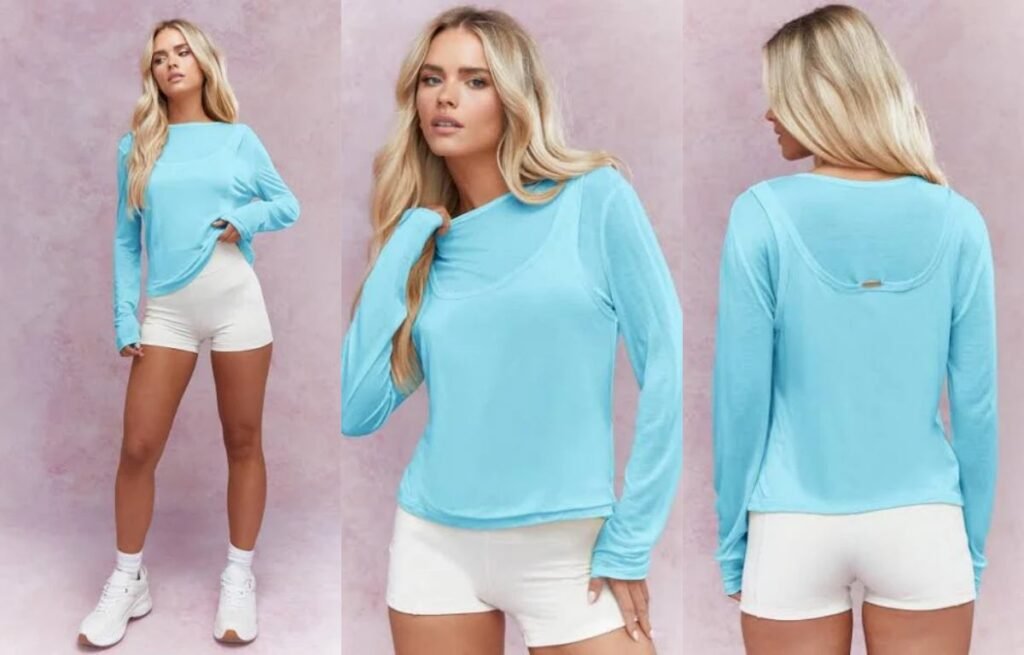
What Exactly Is a Double Layer Top in Fashion Terms?
In technical terms, double layer construction means the garment includes two full or partial fabric layers—often sewn together at the neckline, shoulder, or hem.
Double layer tops feature two actual fabric layers—either matching or contrasting—providing functional benefits like modesty or warmth, as well as a sculptural, dimensional look.
Common Double Layer Designs
| Construction Type | Description | Design Outcome |
|---|---|---|
| Full Body Double Layer | Two full layers across torso | Adds structure + opacity |
| Partial Overlay Layer | Outer panel or cape over main body | Dynamic movement + contrast |
| Built-in Lining Layer | Interior shell fully stitched | Comfort + modesty |
| Offset Hem Layering | Two layers staggered at hem | Casual, asymmetrical finish |
The outer layer may be decorative or structural. The inner layer usually serves a functional or comfort purpose.
How Is a Double Layer Top Different from Layered Look Tops?
Layered look tops imitate layering visually using design illusions, while double layer tops physically include more than one layer of fabric.
A double layer top uses two real layers of fabric, whereas a layered look top creates the appearance of layers through color-blocking, inserts, or contrast elements.
| Feature | Double Layer Top | Layered Look Top |
|---|---|---|
| Layers Used | Two physical fabric layers | One layer with visual tricks |
| Fabric Consumption | Higher | Lower |
| Garment Weight | Slightly heavier | Lightweight |
| Functionality | Often structural or thermal | Mainly visual |
| Complexity in Production | Higher (requires perfect alignment) | Medium (more about pattern design) |
Double layer tops often command higher price points due to more material usage and complexity.
What Are the Functional and Aesthetic Advantages?
The double layer design isn’t just about looks—it also adds serious functional value.
Double layer tops provide structure, reduce transparency, enable textural contrasts, and allow for layered movement, which enhances the garment’s silhouette and styling range.
Key Benefits of Double Layer Construction
- Opacity – Solves the problem of sheer outer fabrics (e.g. chiffon or mesh).
- Structure – Adds weight and shape to floaty or limp textiles.
- Motion – Creates dynamic movement (like flutter overlays).
- Visual Depth – Lets designers experiment with color blocking or tonal layering.
- Thermal Control – Adds insulation in transitional or cold-weather tops.
It’s a smart choice for brands targeting premium basics, feminine silhouettes, or transitional seasonal collections.
Which Fabrics and Silhouettes Are Best for Double Layer Construction?
It’s critical to pair the right fabrics—outer layer should drape or move, while inner layer adds body or comfort.
Ideal combinations include sheer + opaque pairings, stretch + woven blends, or matte + shine textures. Use shell fabrics for outer layer and linings/interlocks for inside.
Fabric Pairing Matrix
| Outer Layer | Inner Layer | Best Use Case |
|---|---|---|
| Chiffon | Rayon knit lining | Blouses, tanks, office tops |
| Satin | Lightweight jersey | Drapey partywear or camisoles |
| Cotton voile | Interlock cotton | Resortwear or sun tops |
| Mesh | Stretch lining | Activewear or fashion-forward tops |
| Linen blend | Modal jersey | Casual urbanwear |
Watch for differential shrinkage, especially in outer/inner fabric combos with different compositions.
Related Articles


